Patagonian
paradise lost?
A salmon farm in Comau Fjord in 2021. (Photo: Alvaro Vidal)
Patagonian paradise lost?
The environmental hazards of farming fish in a warming world
June 21, 2023
Daniel Casado, tall, bearded, and swathed in dark grays, met me at the tiny airport on Chiloé Island in his camper van. Casado, a photographer and documentarian, is one of the cofounders of Centinela Patagonia, a new organization dedicated to protecting the region’s unique environment.
I had traveled to Chile to join the group on its first expedition to survey the impact of salmon farming in Los Lagos, where the salmon industry was concentrated for years and still maintains a significant presence.
Casado drove us out of the hills to Dalcahue, a quaint fishing town bustling with tourists on summer holiday.
We strolled down to the water to meet the other cofounders: Rafaela Landea, the group’s president, Alessandro Bocconcelli, a gregarious Italian oceanographer emeritus from Woods Hole Oceanographic Institution, and Thomas Montt. Montt grew up in Dalcahue, where his father, Pepe Montt, runs a fish export business. Back in the 1980s, Pepe worked at a salmon hatchery, and later built pens for aquaculture companies.
They were busy preparing the Centinela, the boat Pepe loaned the group for the nine-day journey. Its name, which means sentinel, also inspired the group’s name: Centinela Patagonia, or guardian of Patagonia.
The morning we set off dawned cool and overcast. The edges of the narrow channel were choked with aquaculture—sprawling mussel farms with line after line of buoys. We soon passed the first salmon farm. I peered out the window, trying to make sense of something I had only read about.
The farm consisted of a dozen or so square pens in two rows, each roughly 90 by 90 feet. They were covered with nets to keep out birds. At the edges of the floating structure—easily larger than a football field—a foot or two of underwater netting was visible. The pens are essentially submerged cages where young salmon, or smolts, are raised until harvest. As my eyes adjusted to the glare, I could see the silvery fish leaping out of the water.
The open weave of the nets allows water to move through, flushing the pens of excess food and salmon urine and feces. Although sea water should provide the salmon with enough oxygen, most farms also had rafts of oxygen tanks, which are used to increase the amount of dissolved oxygen in the pens. Bocconcelli pointed out the automatic feeders in each pen: narrow tubes spinning around, spitting out kibble-like fish food.
Critics describe these facilities as floating feed lots, but it can be hard to see the extent of that similarity at first, because the farms are mostly underwater, and most of the pollution they produce can’t be seen from a boat. Montt drew my attention to plumes of oily water floating away from some of the farms. When we passed particularly scummy water, Bocconcelli took samples to send away for testing.
The farms were surrounded by floating buoys marking the anchors that attach the pens to the ocean floor. Sea lions often lounged on top, ignoring the spikes or barbed wire meant to deter them. Workers moved around on metal walkways, sometimes stopping to watch us. A few times someone at the farms would radio the boat to ask what we were doing, or pull out a phone to photograph us.
In Quellón, an essential port town for the salmon industry, boats heavy with fish came in, and boats hauling food and equipment departed. A newly constructed farm floated in shallow water, waiting to be towed out to sea. Long tubes ran from holding pens up the beach to processing facilities on shore. Some of the pens sagged into the water under the weight of accumulated kelp and shellfish.
We crossed the Corcovado Gulf to the mainland, the gulf’s namesake volcano rising up to an iconic peak on the horizon, and went ashore on a remote beach. Although there wasn’t a salmon farm in the immediate vicinity, it was littered with plastic detritus, carried there by the wind and waves.
Photos by Jessica McKenzie
In a statement, Intesal, the technological arm of the industry group SalmonChile, touted the “Comprometidos con el Mar” (or “Committed to the Sea”) program launched four years ago, which has spearheaded several beach cleanups in southern Chile. The ultimate goal of the program is to reduce the amount of inorganic waste entering the environment. But from what we saw, plastic remains a challenge.
Photos by Jessica McKenzie
Seen from up close, the scale of the pollution was enormous. Where the beach met the rainforest, trash snagged on the large leaves of the understory. There was a shrub growing out of a buoy green with algae that looked, at first glance, like a rock. We followed a stream to a hidden waterfall tumbling over a mossy cliff; plastic litter formed an unnatural dam where the stream ran out to the ocean. Tiny globules of white Styrofoam swirled in the eddies.
If there was any doubt as to the source, we also found an identification tag from a salmon farm. The beach was desolate, accessible only by boat—but that special human something was everywhere. And yet plastic is only the most obvious kind of aquaculture pollution.
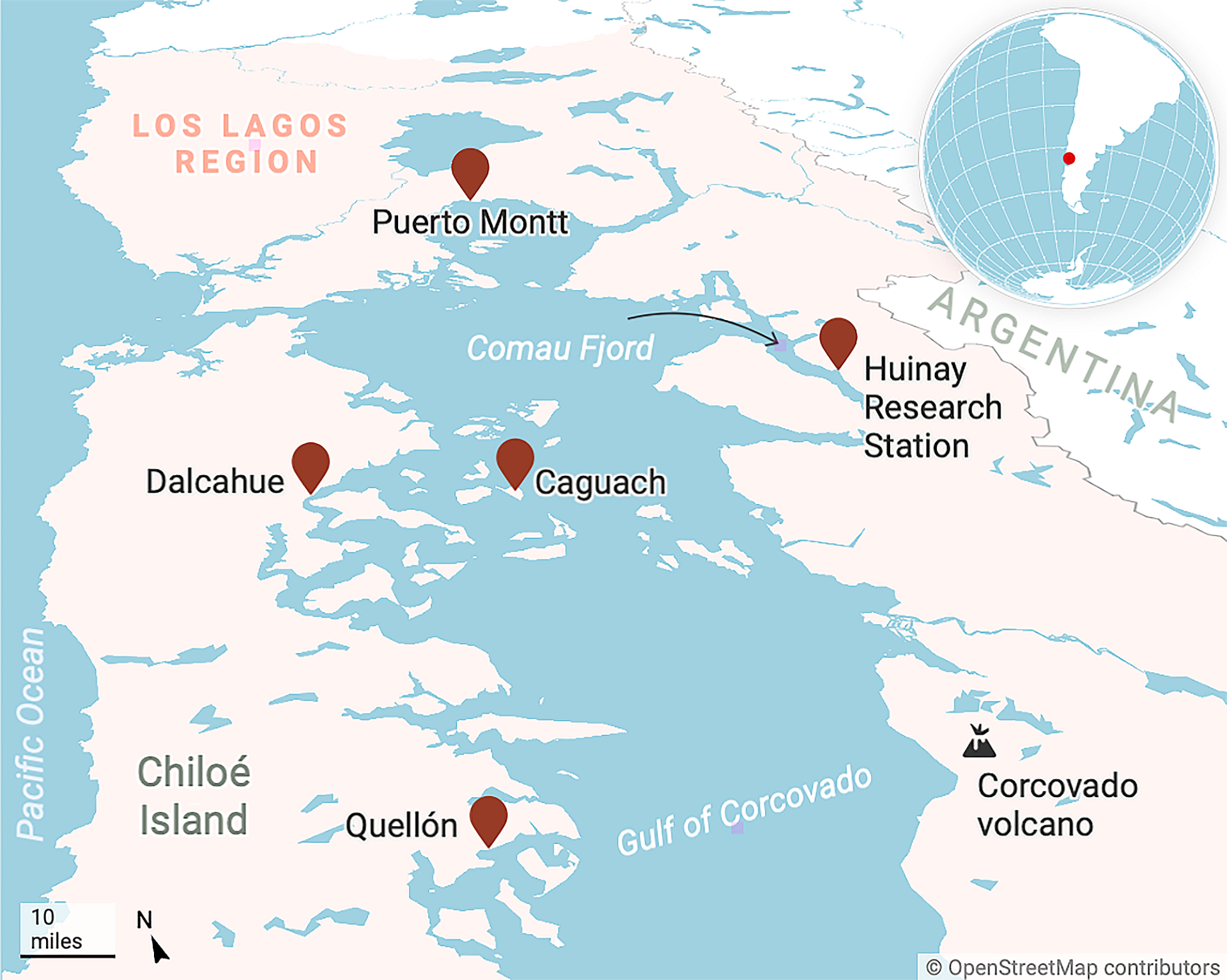
Nobody ever asked Ana Leviñanco if she wanted a salmon farm in front of her home. One day they just came. That was almost 30 years ago.
Leviñanco lives with her husband on a sandy point on Caguach, in the Chiloé Archipelago. Landea, Casado, and I visited late in the morning, after she and her family had spent the early hours gathering luga, a kind of seaweed, at low tide. They sell it to companies that extract carrageenan, a common food thickener. It was spread out over their front yard, drying in the sun.
In 2007, the salmon farm visible from their living room window was one of many closed amid an outbreak of infectious salmon anemia, a highly contagious viral disease that swept through the Chilean salmon industry. The company, Marine Harvest, left behind a pontoon, some buoys, and a beach littered with trash, but kept the aquaculture concession. Last August, Marine Harvest returned, now operating under the name MOWI, and restarted the farm. (MOWI did not respond to a request for comment.)
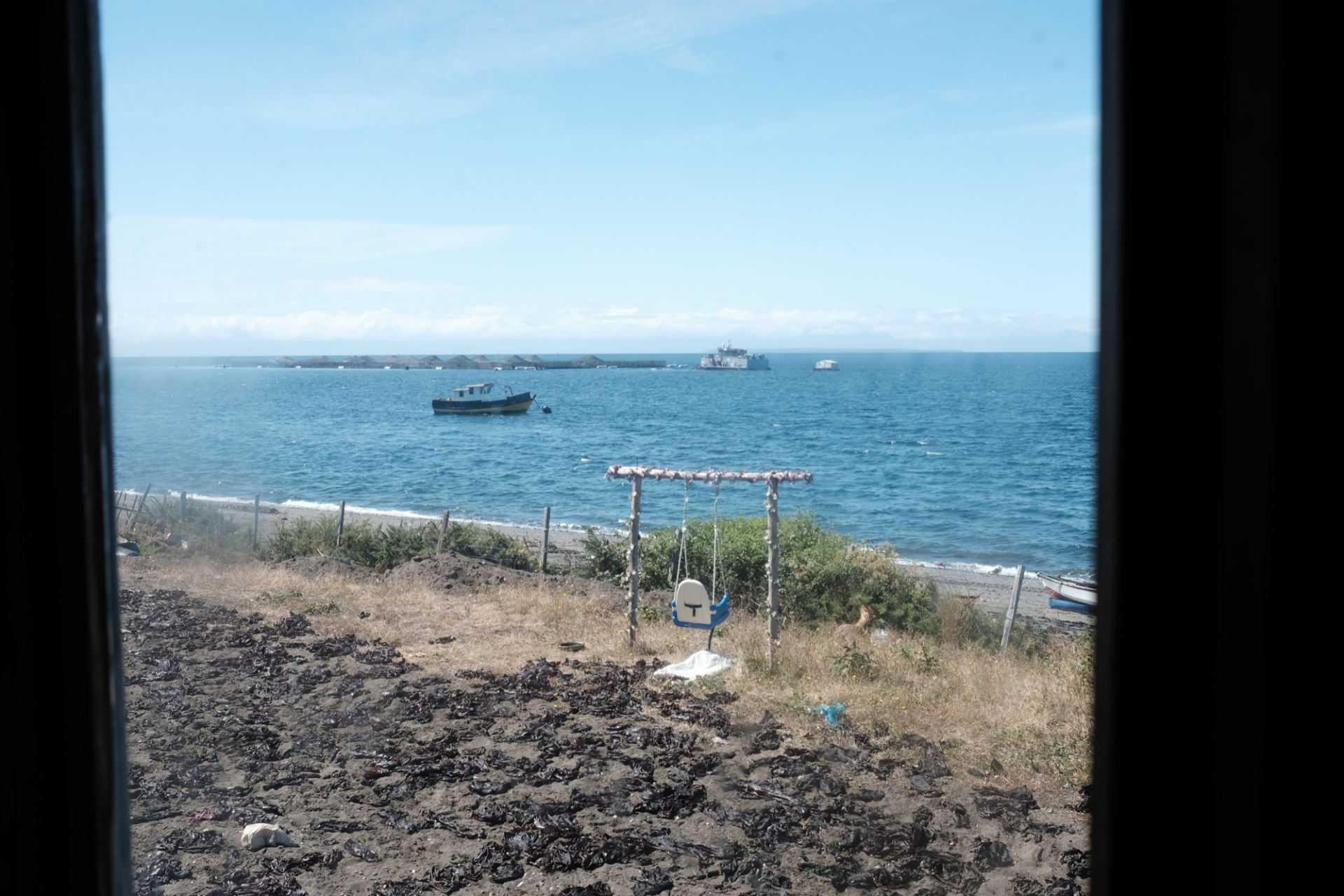
Boats come and go at all hours. Lights and noisy generators run throughout the night. The high tide line is littered with bits of Styrofoam and other plastic waste mingled with shells and bits of seaweed. Leviñanco said the ocean foam is sometimes tinged pink and oily to the touch. Her family has stopped collecting luche, an edible seaweed, near the farm because it is awash in feces and chemicals. She and many of the island’s other 480 residents worry that the local sea snails, clams, and mussels are no longer safe to eat.
Alex Mayne, a friend of the Leviñancos who sat in on our meeting, said that for centuries, the indigenous people of the Chiloé Archipelago built fishing corrals out of stone. Fish came at high tide to feed on algae and were trapped when the tide ran out. The corrals functioned as food storage in the years before refrigeration became common. Now, Mayne said, the fish don’t come because the rocks are bare.
The amount of nitrogen released by Chilean salmon farms every day is comparable to the waste of 9 million people.
Leviñanco said she has no recourse against the salmon farms. “She feels very alone in this fight,” Landea translated.
She has good reason to be concerned about the effluent from salmon farms. Researchers estimate the amount of nitrogen collectively released by Chilean salmon farms every day is comparable to the waste of 9 million people. To put that in perspective, Chile’s total population is just over 19 million people.
When she lived in the Aysen region, Landea went diving near a salmon farm and saw how food and feces accumulated below the nets in a “pyramid of shit.”
Microbes thrive in that environment, feeding on the organic matter and using up the oxygen in the water. This can lead to hypoxic (too little oxygen) or anoxic (severely low oxygen) conditions on the sea floor, killing anything that requires oxygen to survive. Most studies have found that salmon farms have some level of eutrophication, or excessive nutrient loads that lead to oxygen depletion, beneath them. Sites in sheltered parts of the sea, with slower water currents, are especially susceptible.
A government report found that only a quarter of Chilean fish farms had anaerobic (no oxygen) conditions in the sediment beneath them in 2016. But waste from the farms could be causing problems elsewhere.
According to the University of Concepcion’s Renato Quiñones, the lead author of a review of the scientific literature on Chilean salmon farming, the fate of nutrients introduced by salmon farming is poorly understood, particularly in deeper fjords where the floor of the ocean is too steep for the waste to accumulate directly below the farms. “All the organic and inorganic material goes somewhere,” Quiñones and his colleagues wrote. “Although greater circulation could facilitate recycling, organic matter may also be accumulating in the deeper bottom of the fjords beyond the farms. Such impacts are not being examined or monitored.”
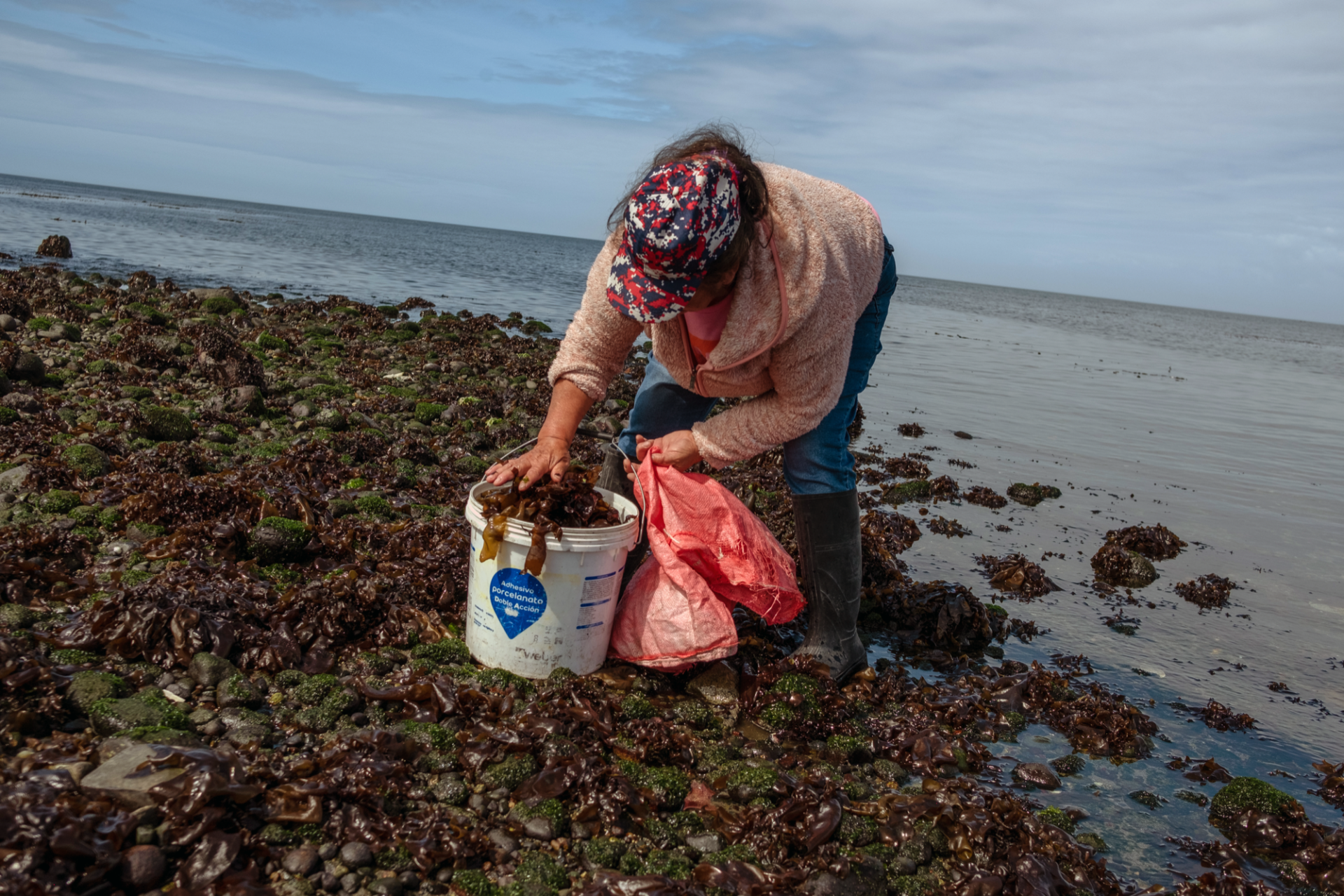
Farm waste can also introduce antibiotics into the environment. Researchers have found tetracycline and quinolones—two antibiotics commonly used to treat a wide range of bacterial infections in humans—in wild fish captured near salmon farms in the Los Lagos region. Both of those species, robalo and cabrilla, are food staples for local fishermen.
The Chilean industry’s use of antibiotics is among the highest in the world. In 2021, its salmon farmers used 510 tons of antimicrobials to produce roughly a million tons of salmon. In contrast, Norwegian salmon farmers used less than a quarter-ton to produce 1.4 million tons of salmon in 2019. Prolonged use of high levels of antibiotics promotes the growth of antibiotic-resistant bacteria in ocean sediments. Researchers have even proposed that the chemical-laced water pollution from the salmon industry is behind an increase in skin disorders on Peale’s and Chilean dolphins.
The extraordinary high level of chemical treatments, mostly antimicrobials and pesticides, is the primary reason that much Chilean salmon has been classified “Avoid” by the Monterey Bay Aquarium’s Seafood Watch program, unless it has been certified by the Aquaculture Stewardship Council.
The chemicals fish farms use to treat outbreaks of sea lice are known to harm other species of animals as well. Sea lice are crustaceans, so treatments targeting them could also affect wild crustaceans. Indeed, scientists have found that two insecticides, cypermethrin and deltamethrin, kill the larvae of the Chilean rock crab, an important species harvested by artisanal fishermen, at exposure levels well under those prescribed by manufacturers to treat sea lice.
“Topics related to inorganic and chemical waste in the marine ecosystem are still areas that lack a complete understanding of their real impact on wildlife,” Intesal, the salmon industry group, responded in a statement. “This requires a more ecosystemic perspective, as various sources and factors can contribute to actions affecting the marine ecosystem.” The spokesperson added that the industry is actively working to reduce the use of pharmaceuticals and other chemicals on farms.
In Comau Fjord, we passed a farm where fish were being flushed through orange plastic tubes, likely receiving a chemical bath for sea lice. As the boat lay anchored in a nearby cove that evening, the brilliance of the Milky Way above was rivalled only by the glow of the blindingly bright lights at the salmon farm. Artificial lights change the salmon’s hormonal processes, preventing them from reaching sexual maturity. This has been found to improve the quality of their meat, and extends feeding times beyond normal daylight hours, making the fish grow faster.
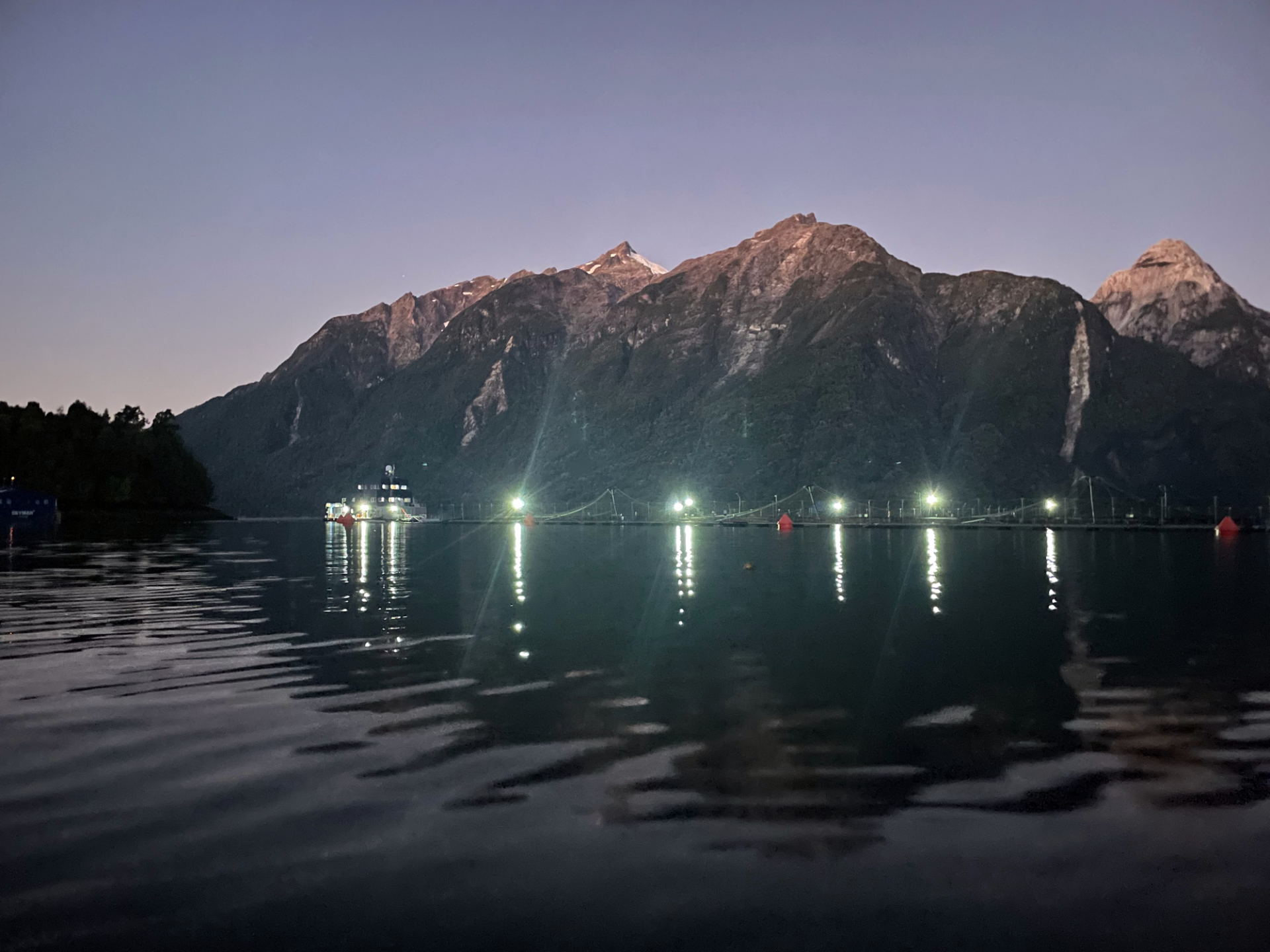
The Huinay Research Field Station is a cluster of wood-beam buildings nestled in the rainforest between a stony shore and the foothills of Comau. For two decades, this was Vreni Häussermann’s home and workplace. She came to know the fjord well—and saw how the salmon industry changed it forever.
In the mid-1990s, Häussermann and her research partner—now husband—Günter Försterra set out on an ambitious quest to survey the marine invertebrates along Chile’s extensive coastline. Over six months, they traveled from Arica to Punta Arenas, diving every 200 kilometers.
“We found out that the fjord region is the most diverse and the least known, and for us also the most beautiful,” she told me over coffee in a bustling supermarket café in Puerto Montt. “That was also the time when we discovered the cold-water corals.”
The coral reefs most people are familiar with—via Jacques Cousteau and Finding Nemo—live in tropical waters at relatively shallow depths. Many cold-water corals, on the other hand, live deep under water, more than a thousand feet below the surface. The corals Häussermann and Försterra found lived in cold but much shallower waters, sometimes just 26 feet below the surface. “It took a long time until people really believed us that these were really shallow and unique,” she said.
Around this time they heard about the new scientific research station in Comau, and secured permission to visit and start diving in 2002. Häussermann later became the station’s scientific director.
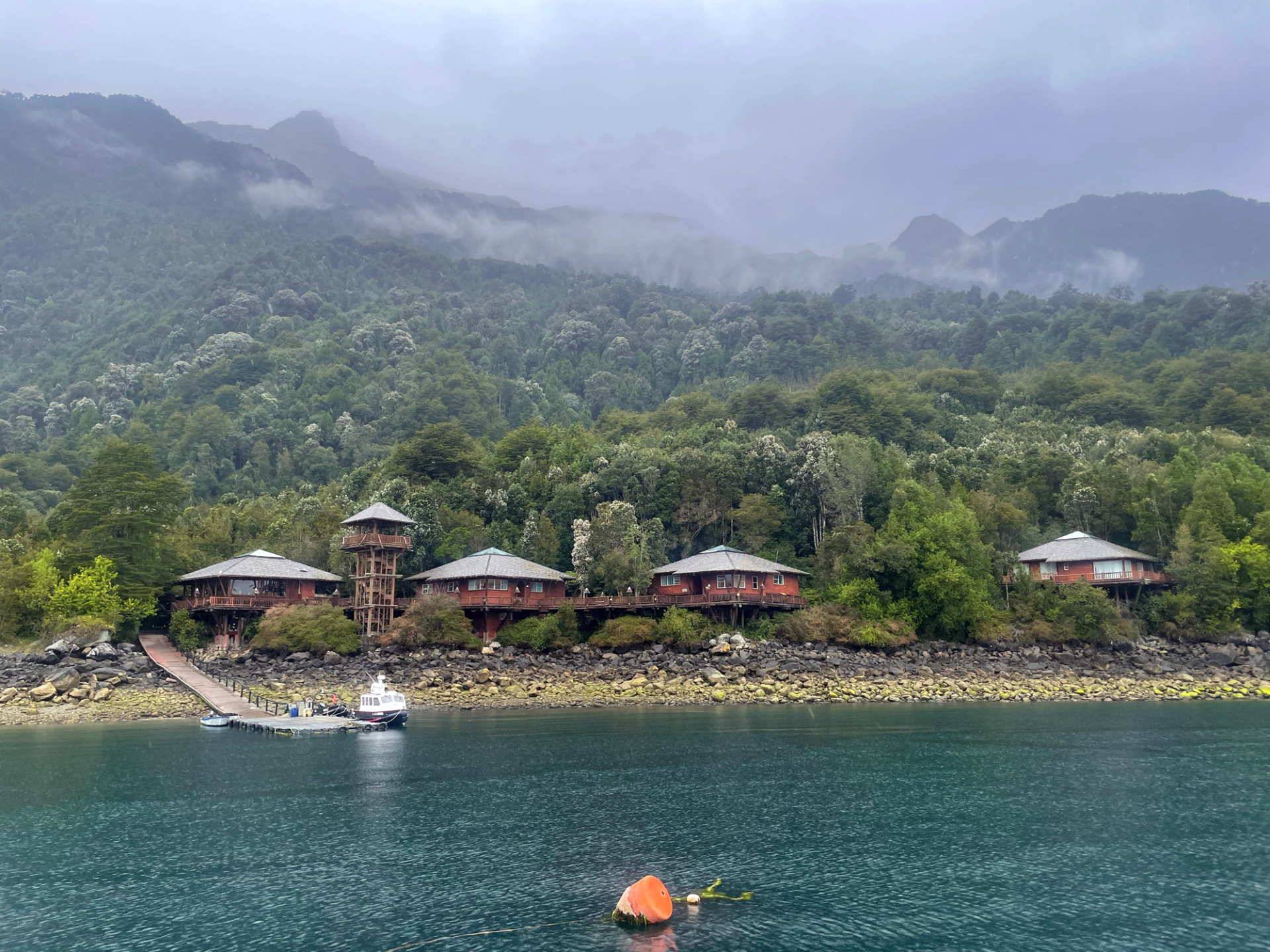
“We told the government we need to protect Comau because of the corals. They’re unique,” Häussermann said. “They told us, ‘There are so many fjords in Patagonia. Protect anything in central Patagonia, where there’s no interest of salmon farming. Why do you need to protect Comau, where there’s such a high interest?’ And then we were like, ‘But maybe there are no corals in other places.’ And they said, ‘Well, probably there are.’
“And then basically we were in the position of having to prove where there are corals and where not.”
Over countless diving expeditions, Häussermann and Försterra identified 11 different types of invertebrate forests in Chile, including cold-water stony corals, gorgonians, hydrocorals, polychaetes, giant barnacles, sponges, and ascidians. They found dense coral banks only in the three northernmost fjords: Comau, Reñihué, and Reloncaví. A few others have small patches of corals, but nothing compared to the forests in those three fjords. They also had banks of brachiopods, shelled marine animals that Häussermann described as living fossils, common in the Cambrian Era but extremely rare now.
“These three fjords are different, are special, and we don’t know why,” she said.
At the same time, the salmon farming industry was rapidly expanding. When Häussermann began diving in Comau, there were just three small salmon farms. A decade later there were over 20 large farms.
“That was when we had the coral mortality in 2012. The corals died in more than half the fjord,” Häussermann said. “In April 2012, we dived one week, they were fine, and the next week they were all dead.” The sea floor was covered with patches of white bacteria that thrive in oxygen-free environments.
“Since then, the banks didn’t recover,” she added. “There are definitely no more coral banks any more in the whole inner part.”
Before: An intact cold-water coral bank in Comau Fjord in in September 2004. After: The same coral bank in July 2013. Only dead skeletons are visible, and patches of white bacteria show the elevated volcanic activity. The death of the corals was caused by a hypoxic event after a strong algae bloom caused by eutrophication, in combination with elevated volcanic substances in the water. (Photos: Vreni Häussermann and Günter Försterra)
What Häussermann and Försterra think caused the mortality is a combination of large algal blooms—not toxic blooms, but regular green algae—and heightened underwater volcanic activity. That summer, Häussermann said the entire fjord was perpetually green with algae. The problem is that corals can live with volcanic gases if they have enough oxygen, but when the abnormally large algal blooms sank and were consumed by bacteria, the bacteria used up all the oxygen. So the corals—especially the largest species—couldn’t recover.
Häussermann blames salmon farms for adding excess nutrients into the water that feed the algal blooms.
“You put the salmon in the water, which don’t belong there, and then you put their food in the water, so it’s a huge amount of nutrients added into a water that has hardly any circulation,” Häussermann explained. “Comau changes its water every half year, so basically what you put there, stays there.”
It’s not just the corals, either.
“Every time you dive, you still think it’s beautiful, but when looking at photos from before, the difference is huge,” Häussermann said. Between 2003 and 2013, the density of the treelike species of corals called gorgonians at one site had declined by 75 percent. “There was a bunch of anemones that were there before that were gone… there were no hermit crabs left; there were no rock shrimp left. And before that you saw dozens on every dive.”
Establishing a direct link between species decline and salmon farming is difficult because there is no experimental “control” habitat to compare with Comau. “We have salmon farming, we have fisheries, we have mussel farming, we have tourism, we have boats, and we have climate change,” Häussermann explained. “And it’s all everywhere.”
“According to the available scientific literature, there is no concrete evidence to prove the relationship between salmon production in the Comau Fjord and the decrease in benthic fauna,” Intesal responded. “Currently, we are experiencing a period of global changes and oceanographic factors that could explain certain changes in the ecosystem's structure. However, further information is still needed to draw more conclusive and less uncertain evidence.”
But for Häussermann, the link to salmon farming is clear.
“In Comau, I think we can say that if there is an impact that overall, it has to do with eutrophication [excessive nutrients] or sedimentation,” Haussermann said. “Both can be tracked back to salmon farms and nothing else.”
We have salmon farming, we have fisheries, we have mussel farming, we have tourism, we have boats, and we have climate change. And it’s all everywhere.”
As with species decline, it is difficult to prove or disprove whether salmon farming contributes to harmful algal blooms. But scientists are working on that question.
A paper about the harmful algal bloom in 2016 placed the blame for that event squarely on the highly specific hydroclimatic conditions that year: a strong El Niño event, low precipitation, and lots of sun. But it also nodded to “the potential influence of enhanced local nutrient input.”
“There are no demonstrations that salmon farming is causing algal blooms,” said Doris Soto, a senior scientist at the Institute for Multidisciplinary Research in Aquaculture at the University of Concepcion. “But we still wonder—and we have not been able to prove, and that I have to be very clear—that the nutrients from salmon farming might enhance the blooms or perhaps help to expand the blooms.”
Ocean upwelling can also bring nutrients to the surface and contribute to algal blooms. “We don’t know how much the contribution of salmon farming is adding to the normal amount of organic matter and anoxic sediments,” Soto said.
In their written comments, Intesal suggested that any perceived increase in the frequency of harmful algal blooms could be due to greater surveillance, but that companies are nonetheless working to better understand and respond to algal blooms. “Nowadays, continuous work is being done to improve response times in the event of blooms and to act proactively,” they wrote.
Those preparation could be put to the test soon, as El Niño conditions have returned in the Pacific Ocean, which could fuel extreme weather events and create the conditions for another explosive algal bloom in Chile. Patagonia is also likely to experience hotter, drier summers in the coming decades, which could contribute to an increase in algal blooms.
A lot of the impacts are not visible until you are in a state of big crisis.”
“We are having, because of climate change, better conditions for the development of these harmful algal blooms,” Greenpeace’s Estefania Gonzalez said. “What is the other ingredient that the harmful algal blooms need to be super strong and really developed? Nutrients.” Gonzalez cited research from outside of Chile that has demonstrated the connection between harmful algal blooms and an overabundance of nutrients.
“A lot of the impacts are not visible until you are in a state of big crisis,” Gonzalez warned.
Harmful algal blooms can affect even the largest of marine mammals. Häussermann was one of the scientists who discovered and investigated the synchronous death of at least 343 baleen whales, mostly sei whales, in Southern Chile in March 2015. They determined the mass mortality event was likely caused by a harmful algal bloom, exacerbated by El Niño. “The [mass mortality event] reported herein and its probable connection to El Nino-caused red tide events throughout the Eastern Pacific could indicate that marine mammals are among the first oceanic megafauna victims of global warming,” they wrote.
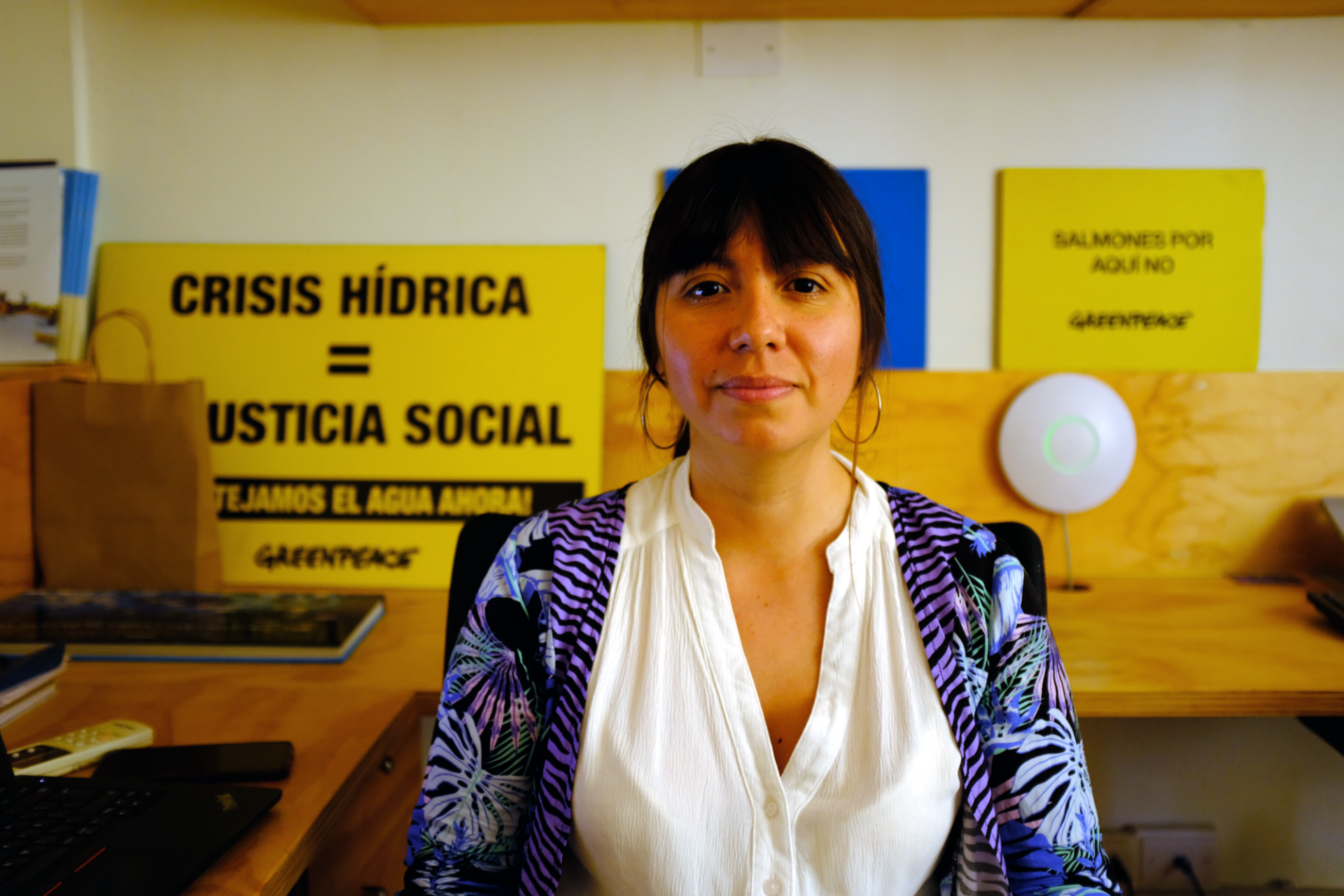
The consensus among the activists I met is clear: They think the Chilean government is unwilling or unable to regulate the salmon industry because it’s too big and powerful to take on.
I heard many allegations of the industry’s flagrant disregard for the environment, each seemingly more dire than the next. But they were generally impossible to confirm. One source had heard farms pipe in fresh water to clear out sediment below the nets before the authorities take samples. A blurry photo sent by a worker in the Magallanes region to Casado purported to show a sea lion stabbed to death after it broke through protective nets. Someone who used to work in the mussel industry told us he saw sea lions, a protected species in Chile, washed ashore, filled with shot.
There is also a widespread assumption that the industry regularly stocks salmon at higher densities than permitted, an allegation that has a bit more teeth given that the new Chinese owners of Australis have sued the former owners for hiding 20 to 80 percent overproduction at five farms.
“The case of Australis was an exceptional case, and industry associations have emphasized the importance of regulatory compliance,” Intesal responded. “[T]his situation does not compromise the practices of other salmon-producing companies or represent a general trend.”
“I wish,” Landea said, when asked if salmon farming can be done responsibly. “I wish it was the case. The thing is this industry has been doing things in a bad way for so long that I think it’s difficult to change practices.”
There is little support in Chile for the complete eviction of salmon farms. Already, there’s a moratorium on new salmon farming concession applications in Chile, but there are more than 200 pending applications, so the industry is still expanding. Gonzalez would like the country to go further and prohibit farms from moving from one area to another, or from expanding production at existing sites. She also wants salmon farming prohibited in all protected marine areas. A rule that would have prohibited new and renewed salmon farming concessions in protected areas was rejected by the Chilean lawmakers at the end of May.
“We really want to make sure that the industry, which we understand is not going to disappear overnight, are accountable for what they do and make an effort to become more sustainable,” Bocconcelli told me. “Maybe they have to reduce their profit, but we want to make sure there is a future for this area.”
The most common reforms proposed by fishermen and environmental activists I met were lower stocking limits and greater regulation and monitoring by the government.
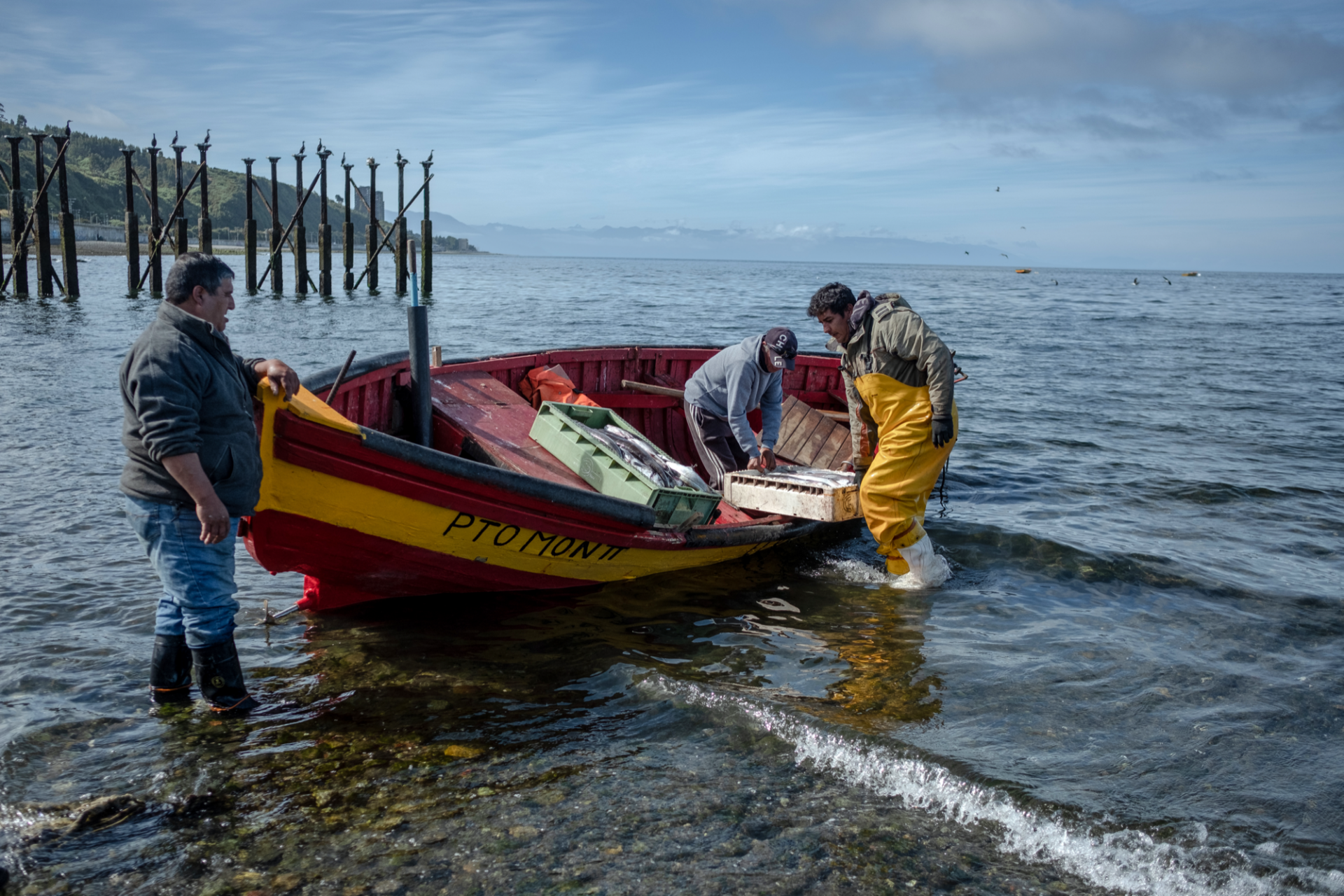
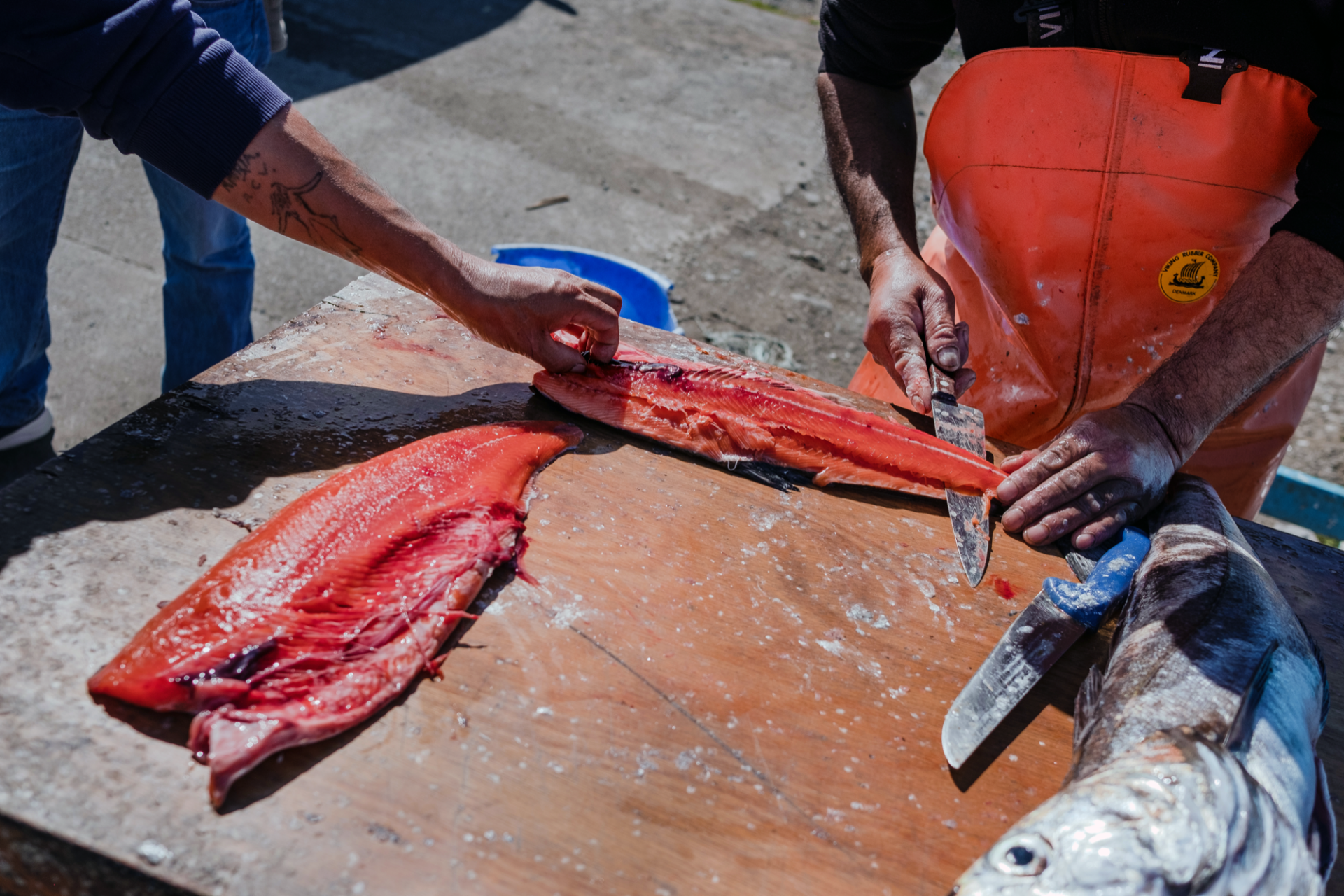
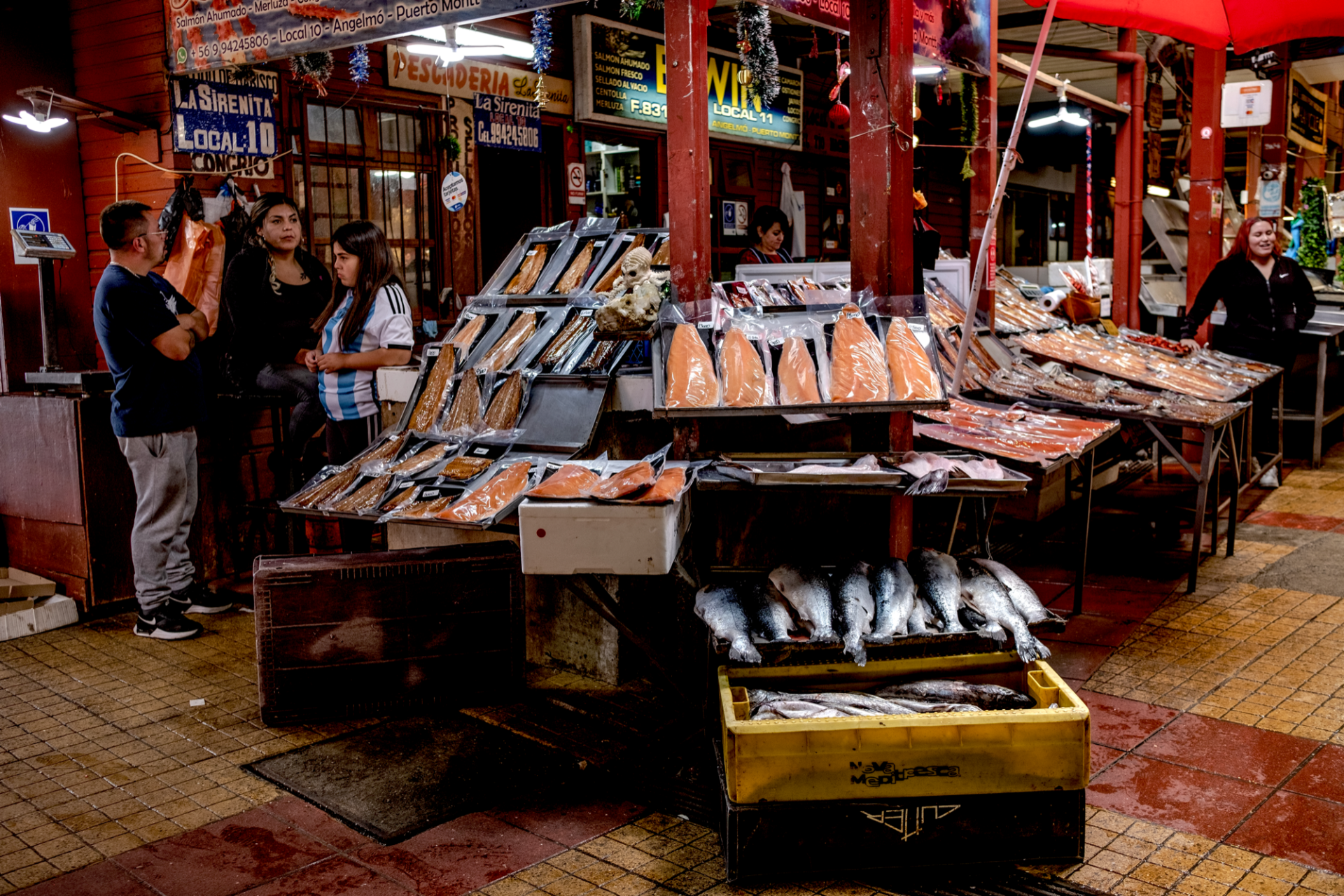
Norway could provide an example. The country is divided into 13 regions that are each assessed for wild salmon mortality from sea lice, a key indicator for the impact of salmon farms on wild salmon. These are rated on a traffic light system: “green” means production in these regions can expand by six percent, “yellow” means production must be held at the same level, and “red” means production must be reduced by six percent.
Norway, which already levies some of the world’s highest costs on salmon farmers for using marine space, has also proposed significantly increasing taxes on the industry, so profits are more widely shared among Norwegians. Proponents of the new tax believe that will indirectly improve environmental impacts, if only by discouraging more growth.
Chile does regulate groups of salmon farms in different regional “neighborhoods,” but those rules are primarily aimed at preventing another disease outbreak like the infectious salmon anemia crisis in 2007. Currently, the environmental impacts of salmon farming are only assessed at individual farms. If the conditions below the nets are found to be anoxic, production must cease until aerobic conditions return. But from the perspective of Centinela Patagonia and Greenpeace, that’s just like pressing a pause button on environmental degradation; it doesn’t really solve the problem.
Intesal’s position is that Chile already has a strict regulatory framework in place, which caps stocking density to 17 kilograms of fish per cubic meter, lower than the upper limit in Norway, which is about 24 kilograms per cubic meter. “Although there are still challenges and areas for improvement, it is important to acknowledge the efforts made to reduce negative impacts and progress towards more sustainable salmon production,” the industry group’s statement concludes.
Soto said that salmon farming in Chile will likely move offshore “sooner or later,” once the technology is there, which could reduce the environmental impacts on coastal systems. But these offshore pilot projects are still very expensive and not immune from the same environmental criticisms as near-shore operations.
There has been recent investment in a completely new way of farming salmon on land through recirculating aquaculture systems, in which salmon are basically raised from egg to harvest in giant aquariums. These have significantly higher investment costs, but the waste from the farms doesn’t flow directly into the ocean, so they have less environmental impact. But if this method takes off, production is likely to be located closer to buyers, which might leave Chile—where salmon is primarily an export product—out of the loop.
Some sources suggested that farming native species more suited to the region could be less environmentally damaging. One company is researching the viability of Chilean seabass as an alternative aquaculture product. Soto said that there are initiatives to farm conger eel and yellowtail amberjack. But that too could ultimately result in hitherto unseen environmental consequences. Where salmon are farmed in places with wild salmon, fish escapes spread disease and pests, consume the same food sources as wild fish, and, when genetically modified salmon breed with wild salmon, degrade the gene pool.
“Salmon farming is intensive farming, and any fish farming will become intensive,” Soto said. “I wish I would know a farmer that says, ‘No, I want to stay small, because I want to protect the environment.’ Sorry, but that doesn’t exist. Every farmer would like to grow, would like to make a little bit more money, to live a little bit better. And that’s part of human nature. And that’s why we require governments to come and say, ‘we have to look at other sustainable development objectives as well, not only economic growth.’ ”
Jessica McKenzie is an associate editor at the Bulletin of the Atomic Scientists.
Design by Thomas Gaulkin.
Correction: An earlier version of this story misspelled Ana Leviñanco's name as Levañanco, and misidentified Caguach as a part of the Desertores Islands, when it is a part of the Chiloé Archipelago.
Keywords: Chile, El Nino, animals, aquaculture, biodiversity, climate, climate crisis, coastal land use, fishmeal, food production, food systems, marine biology, marine life, ocean warming, oceans
Topics: Climate Change
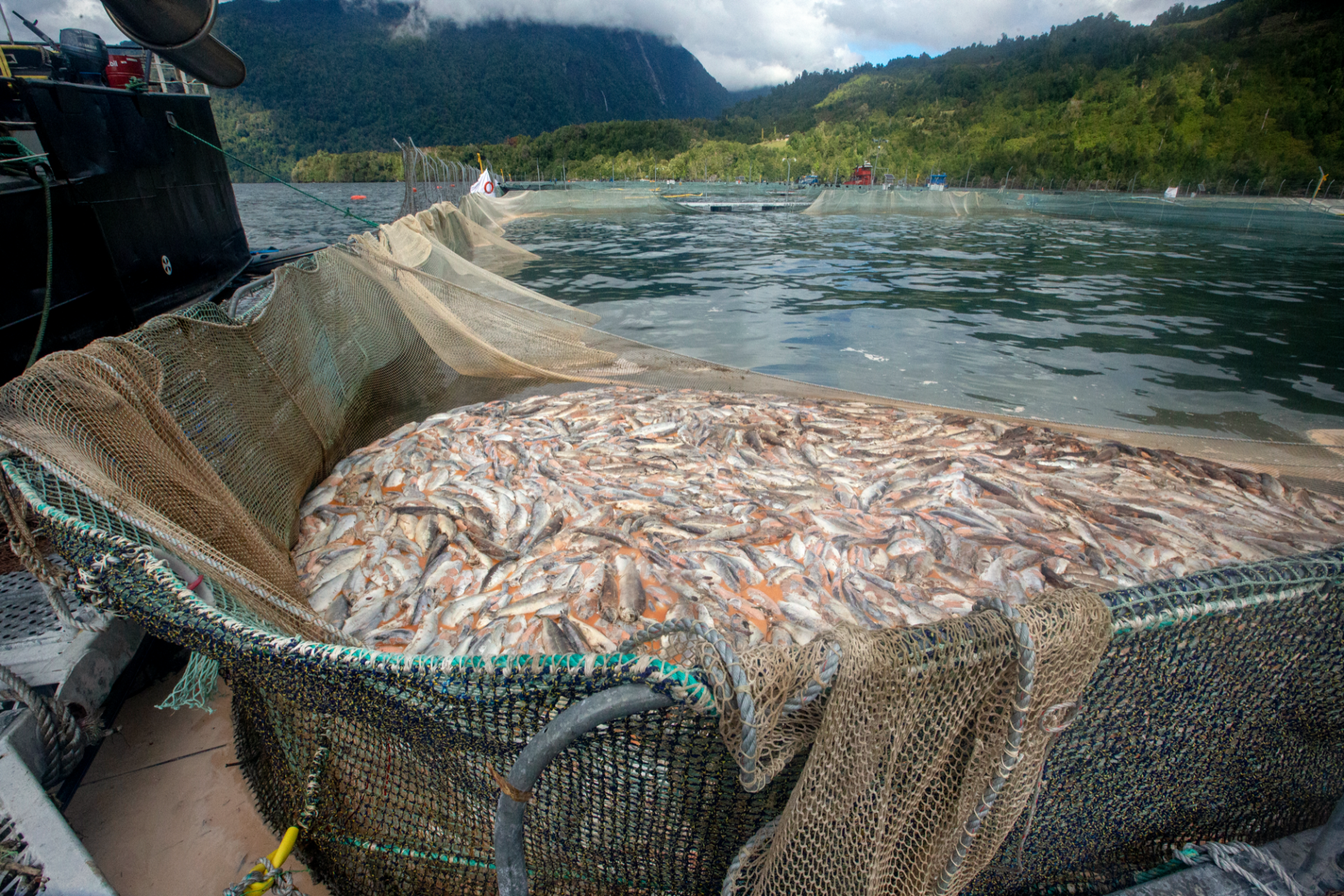
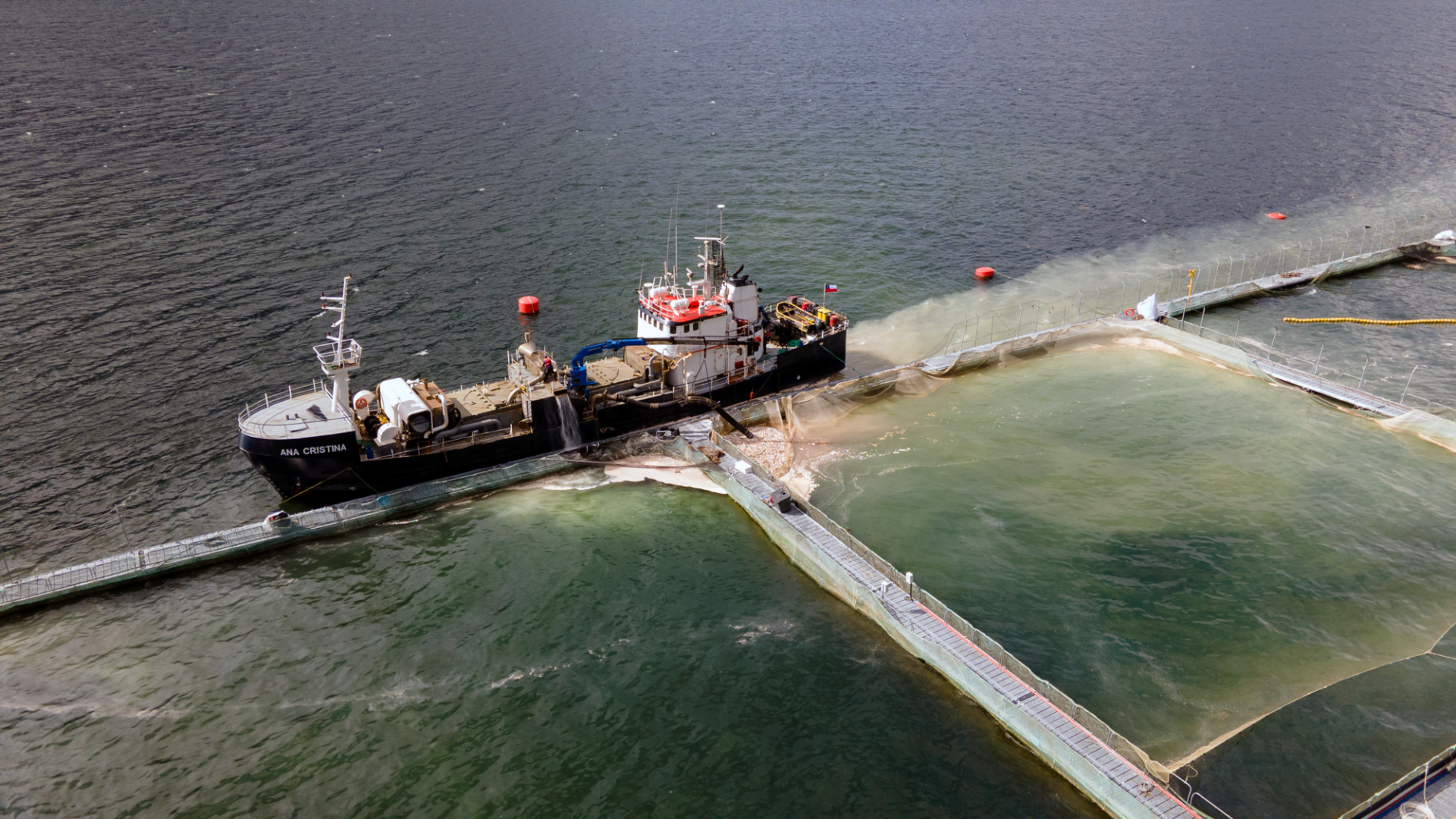
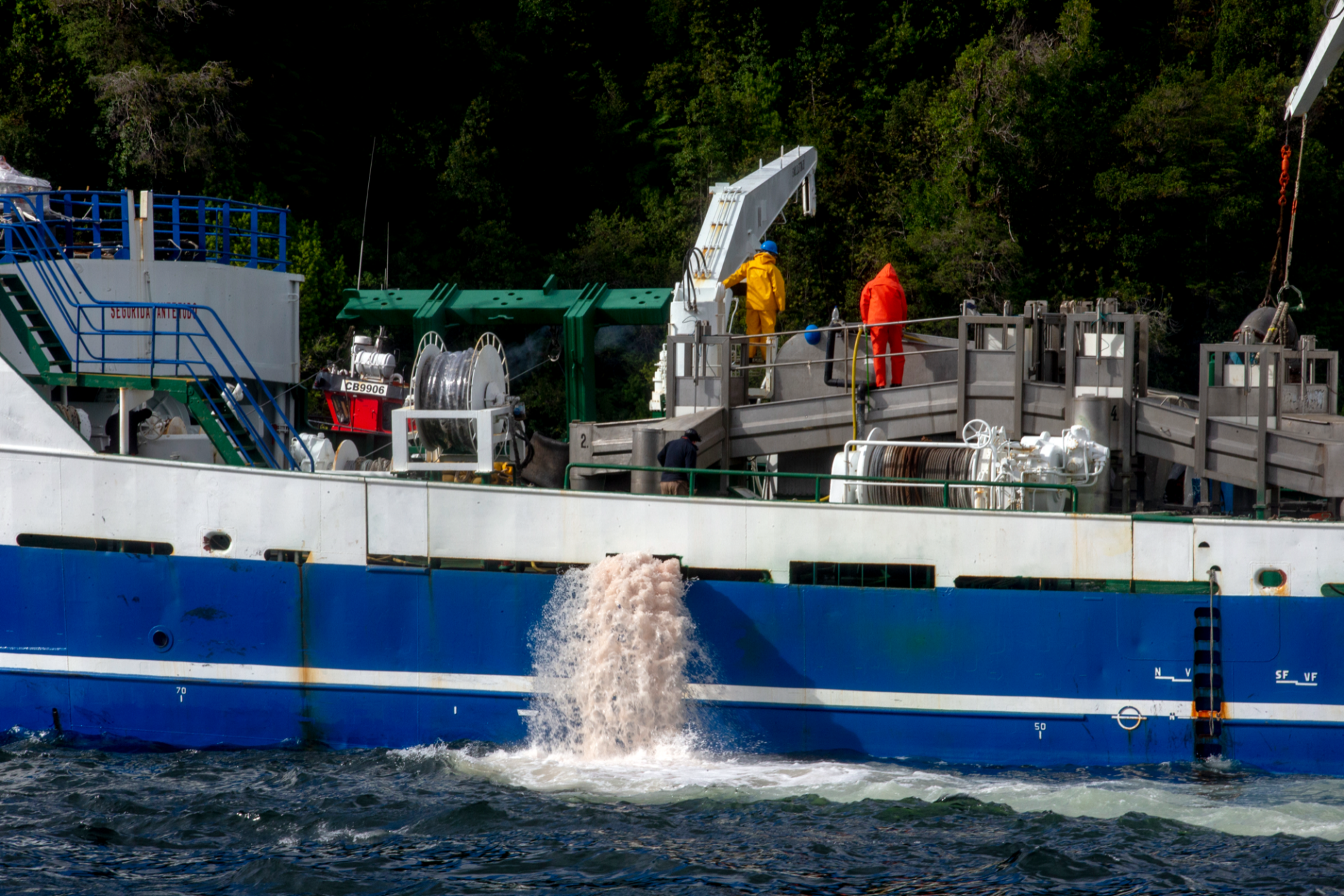
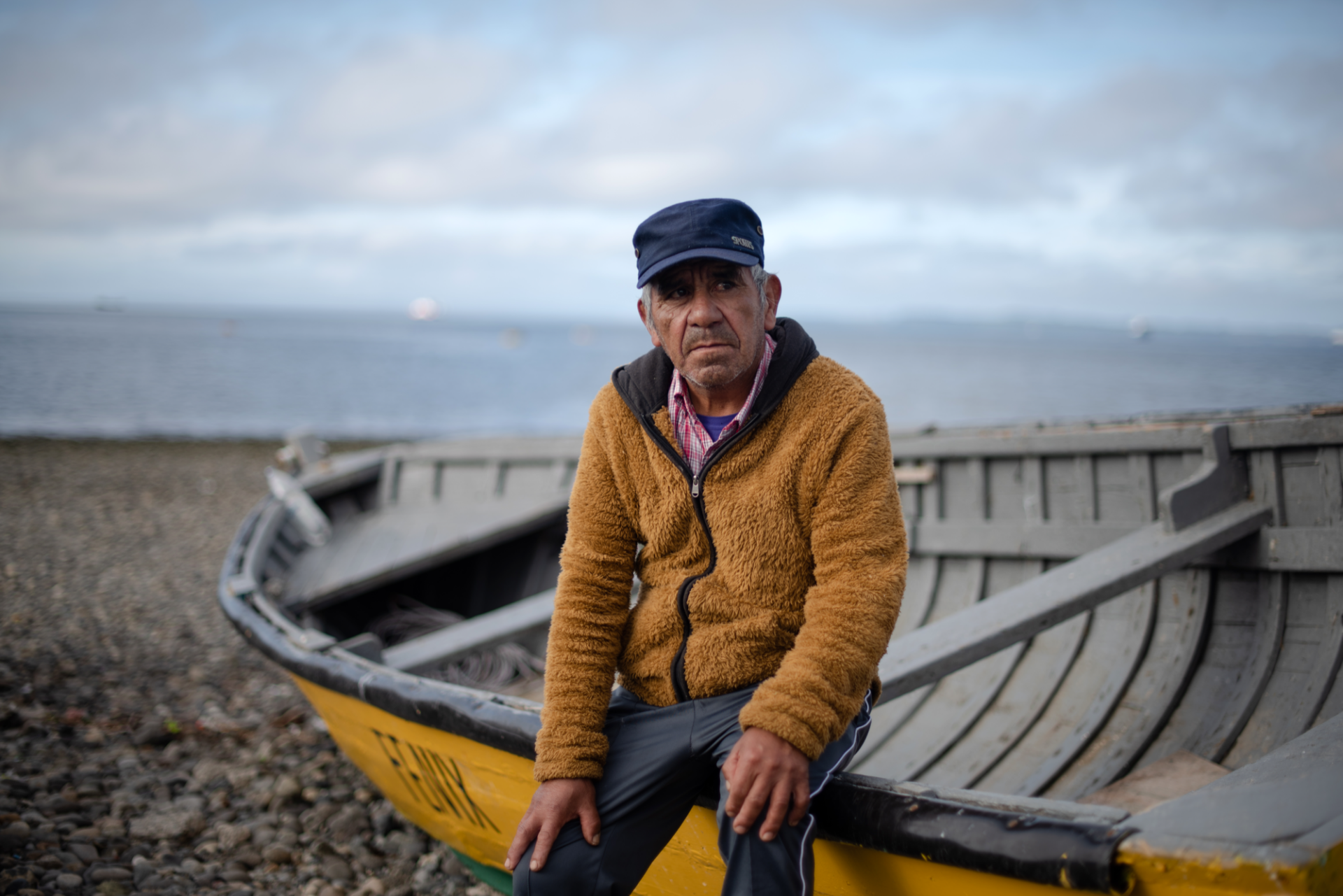
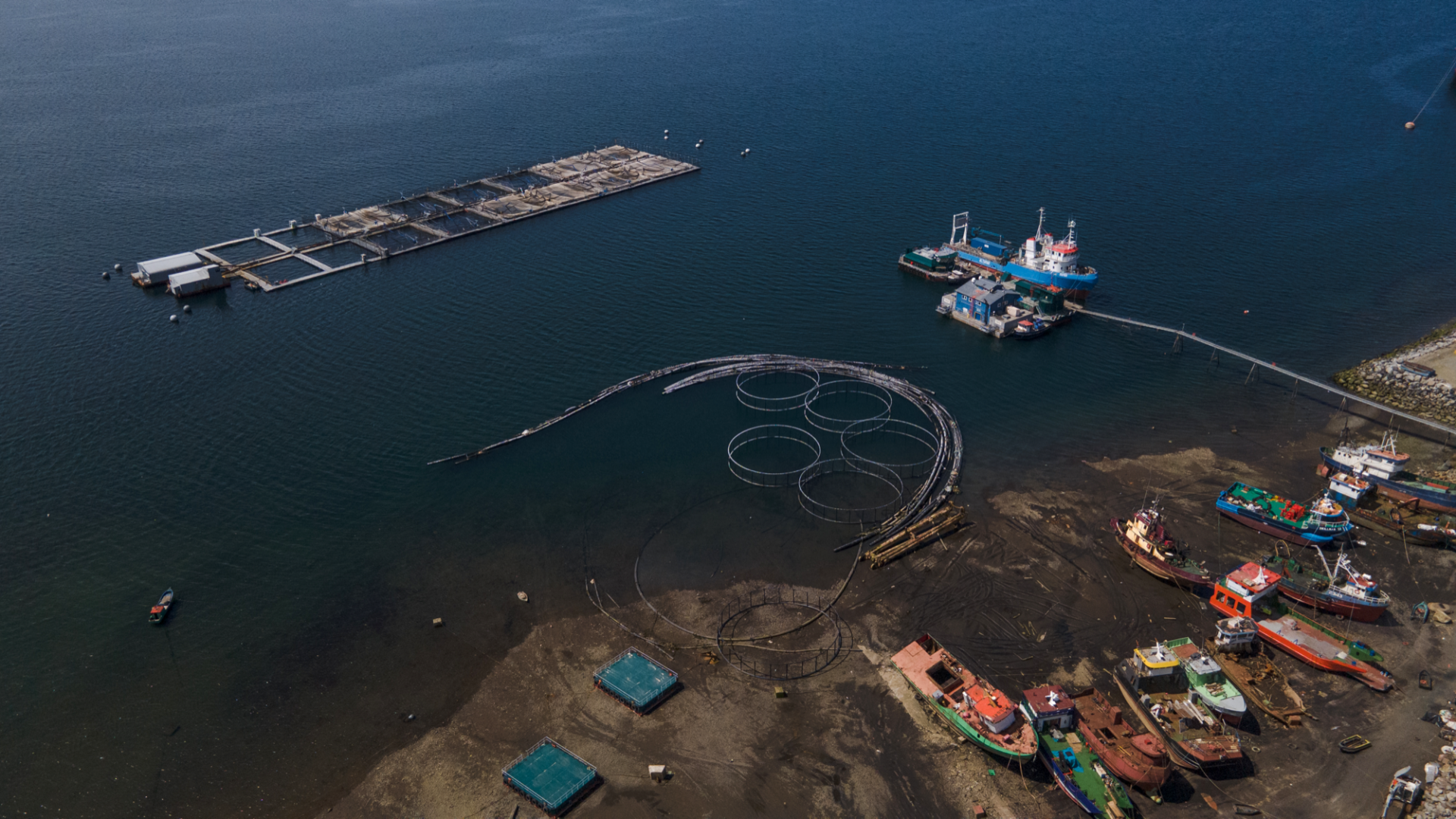
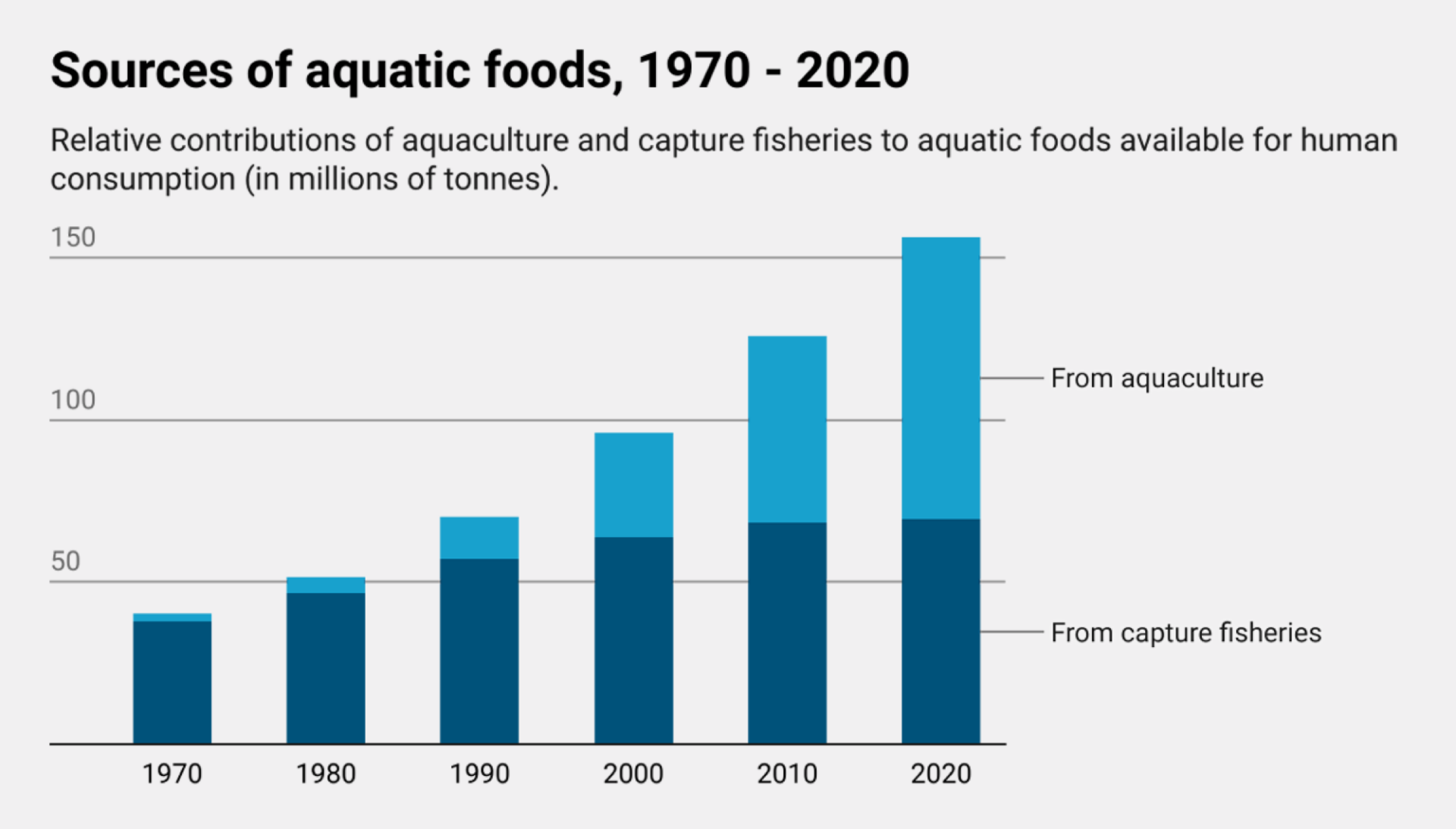
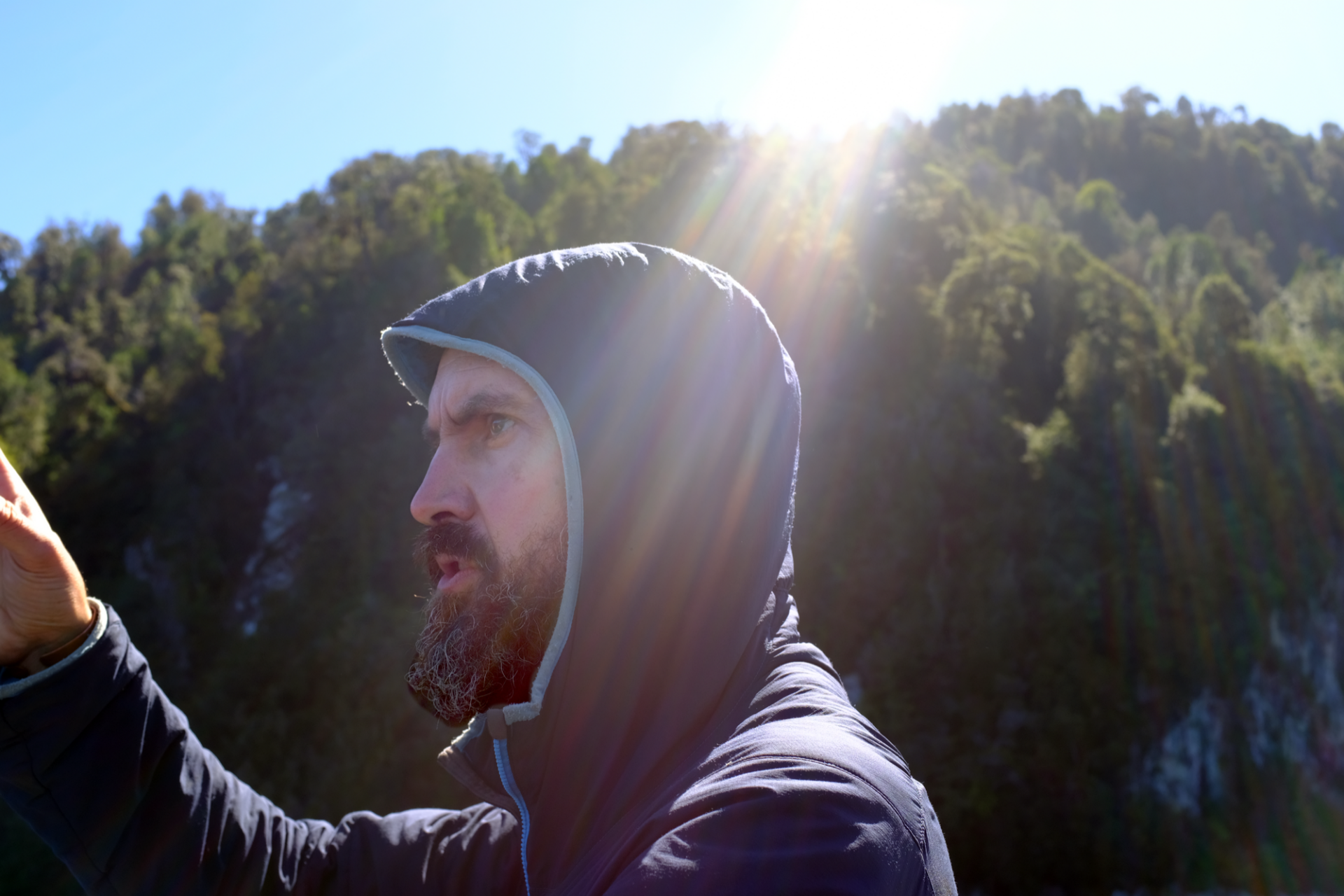
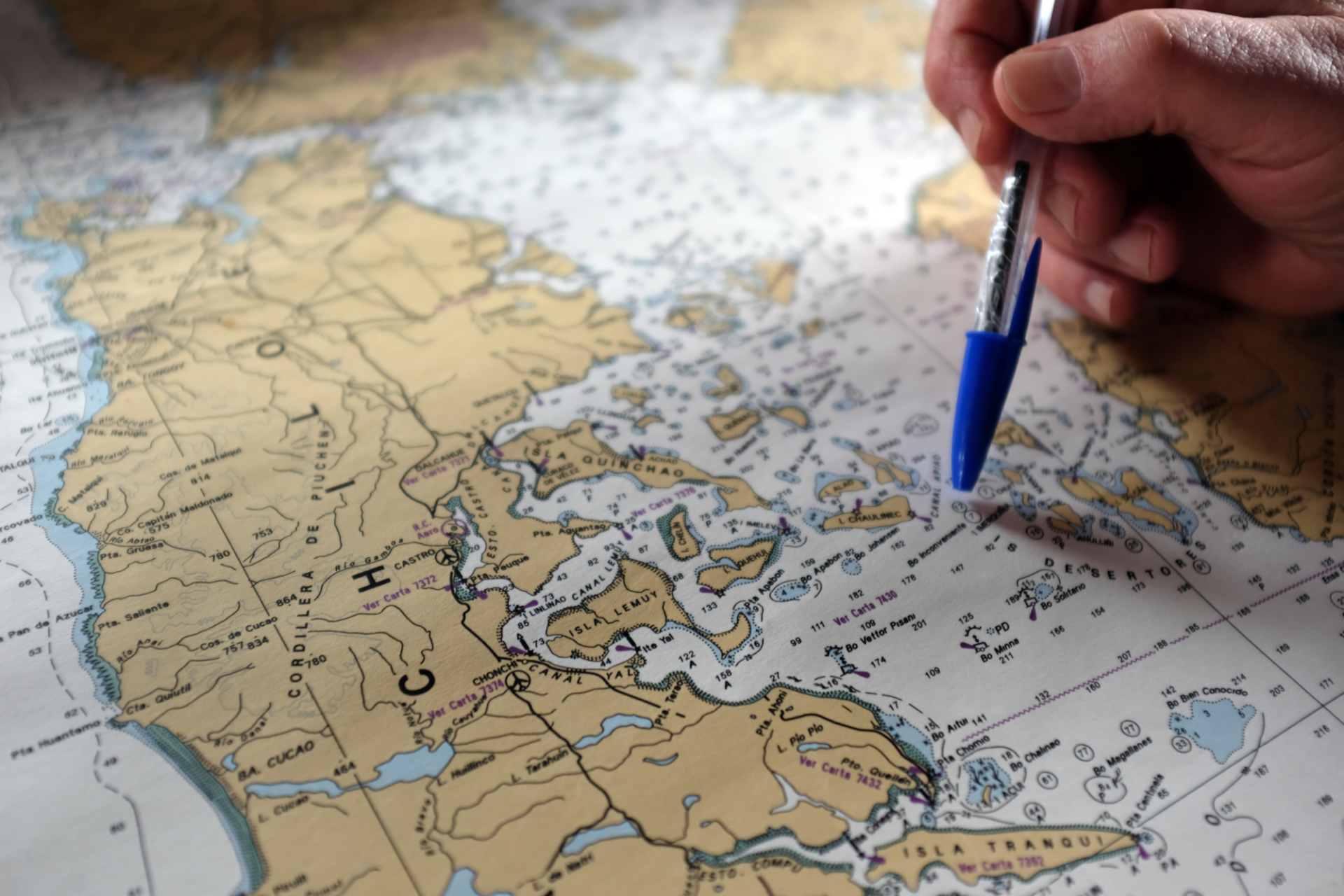
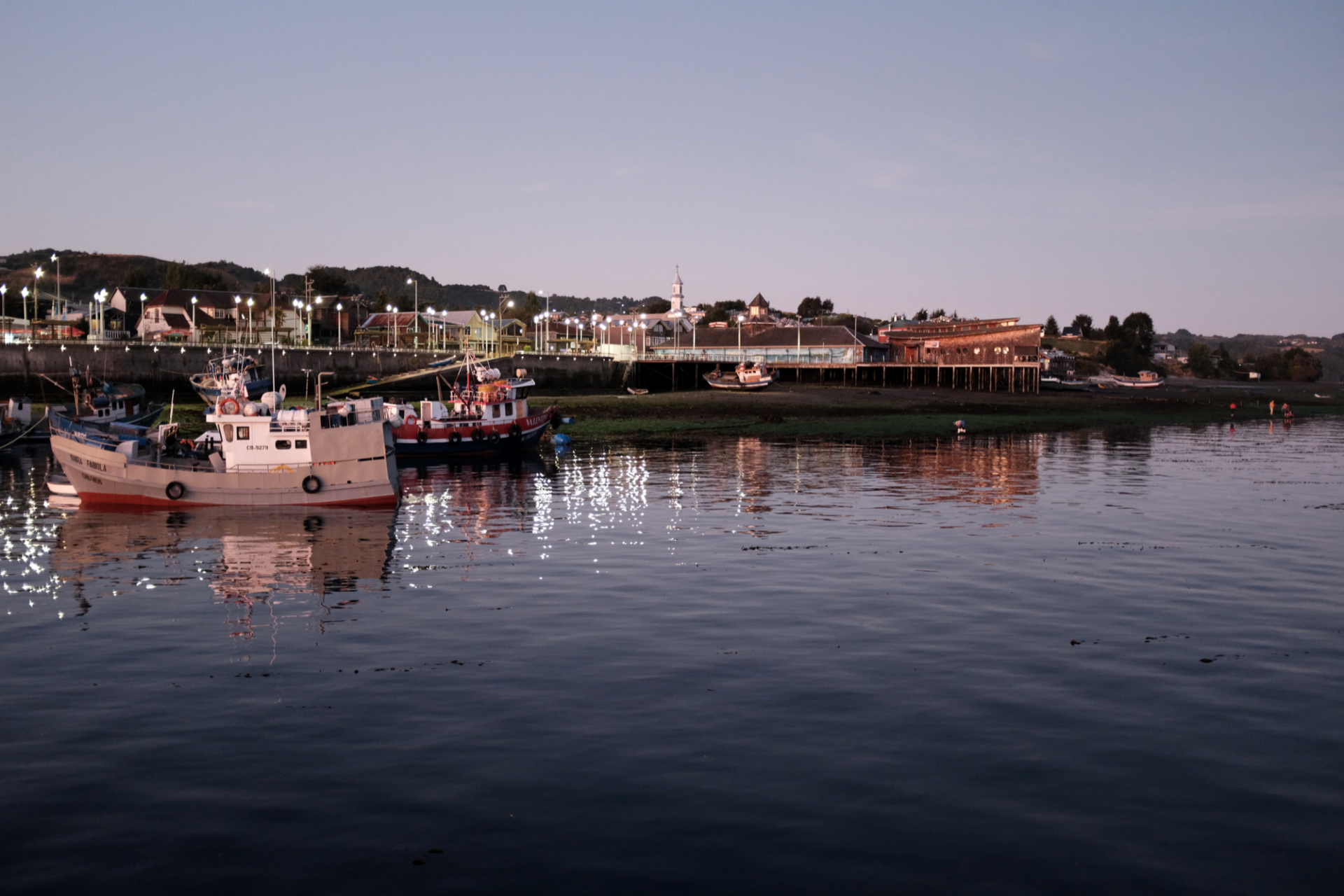
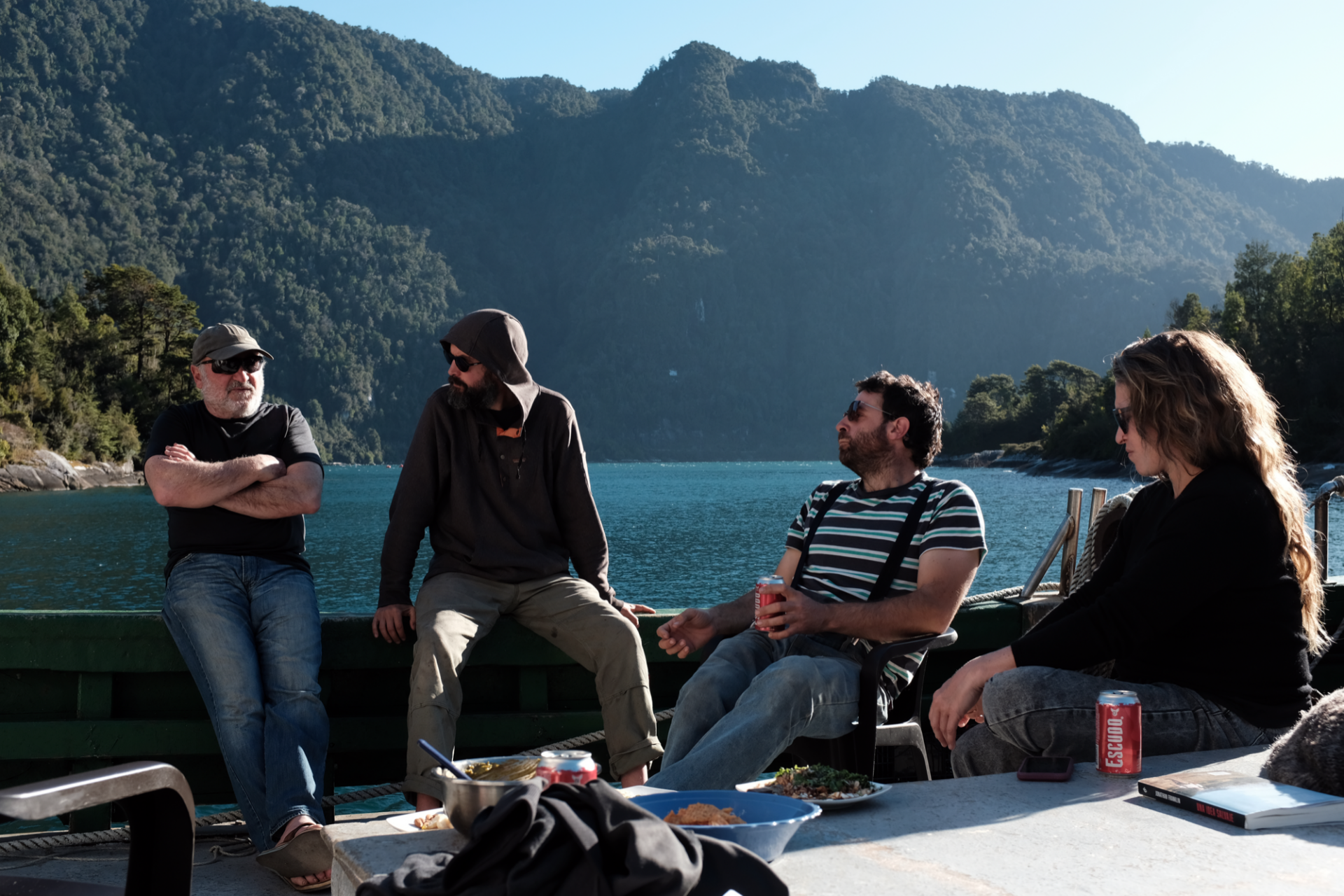
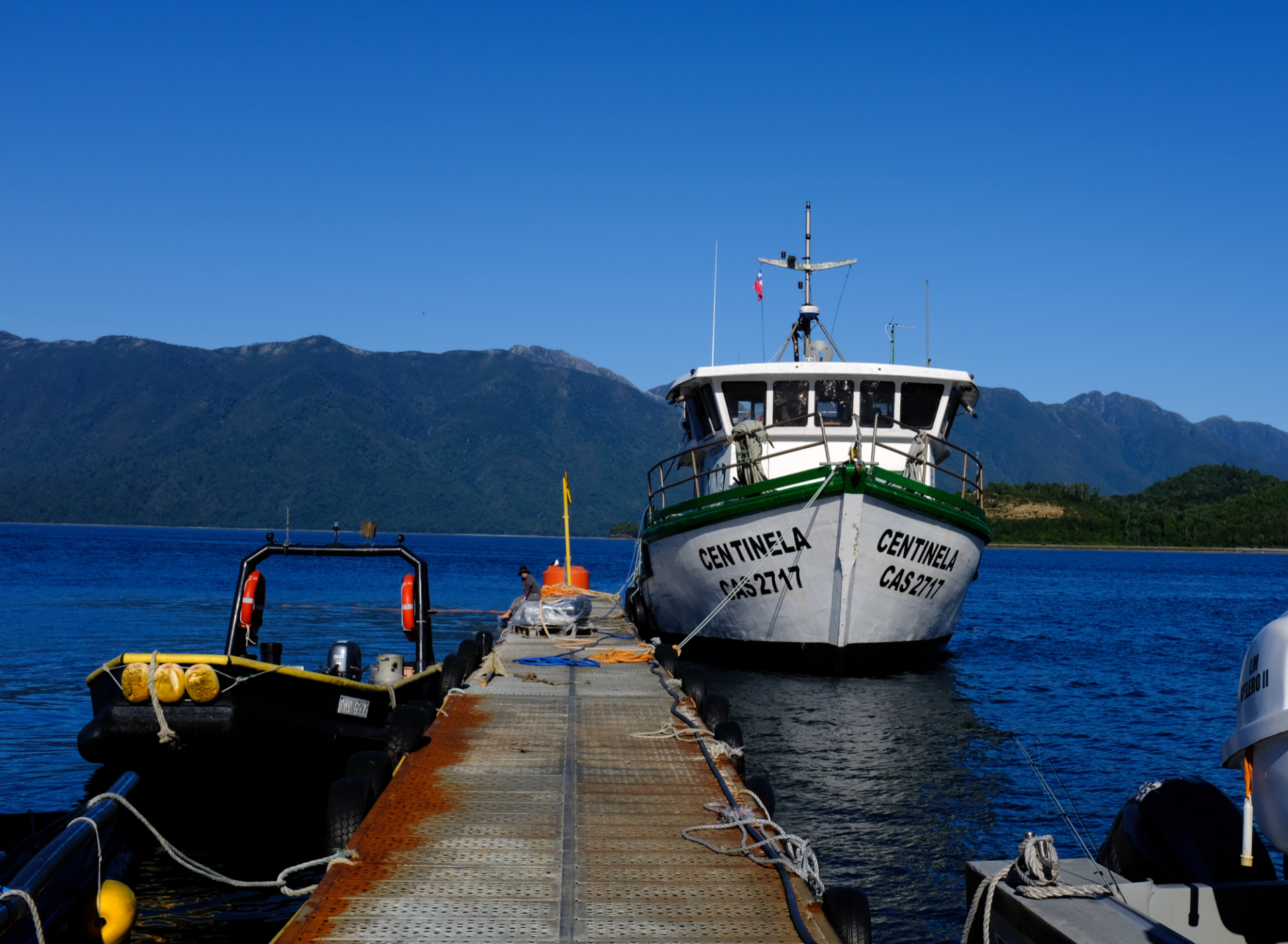
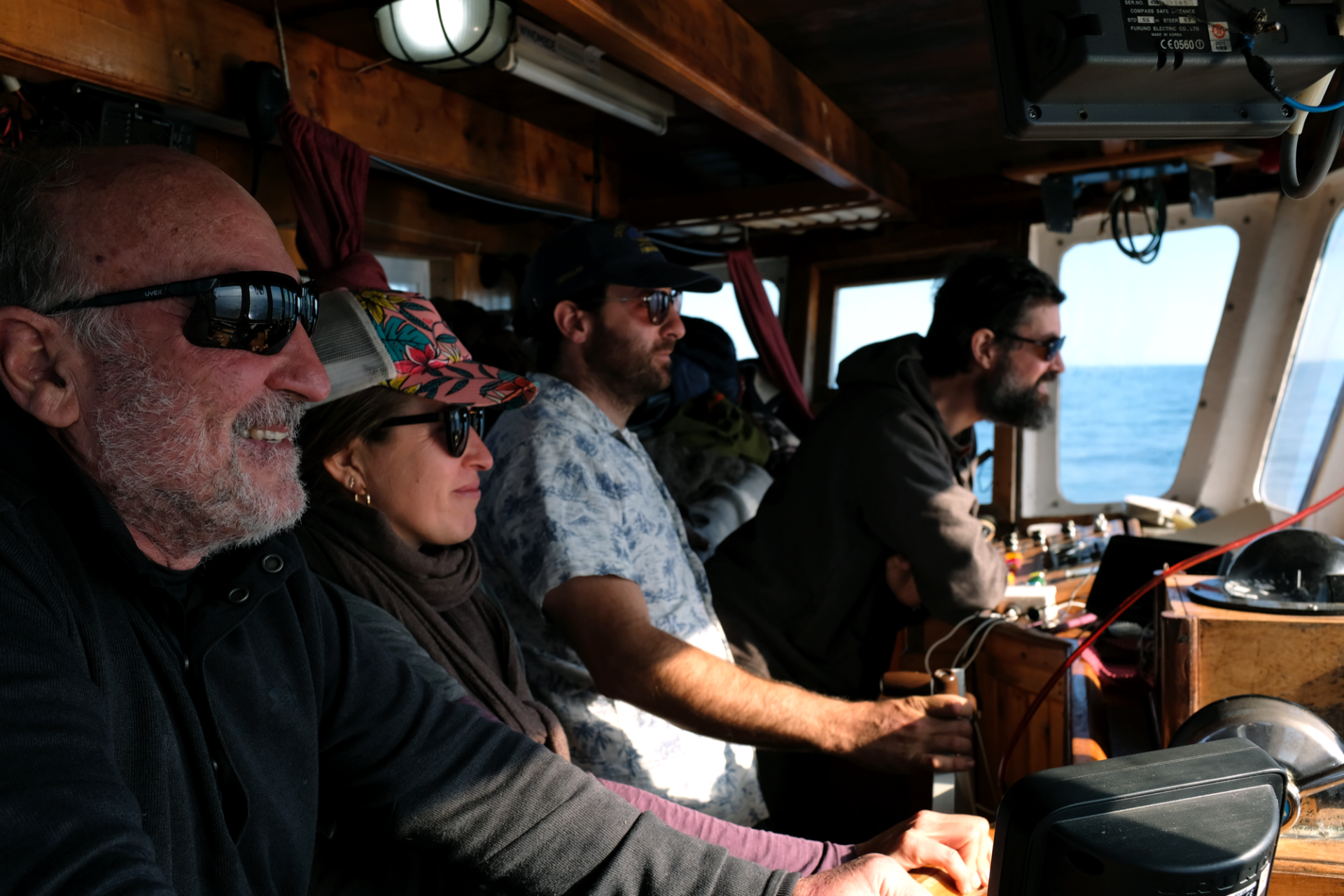
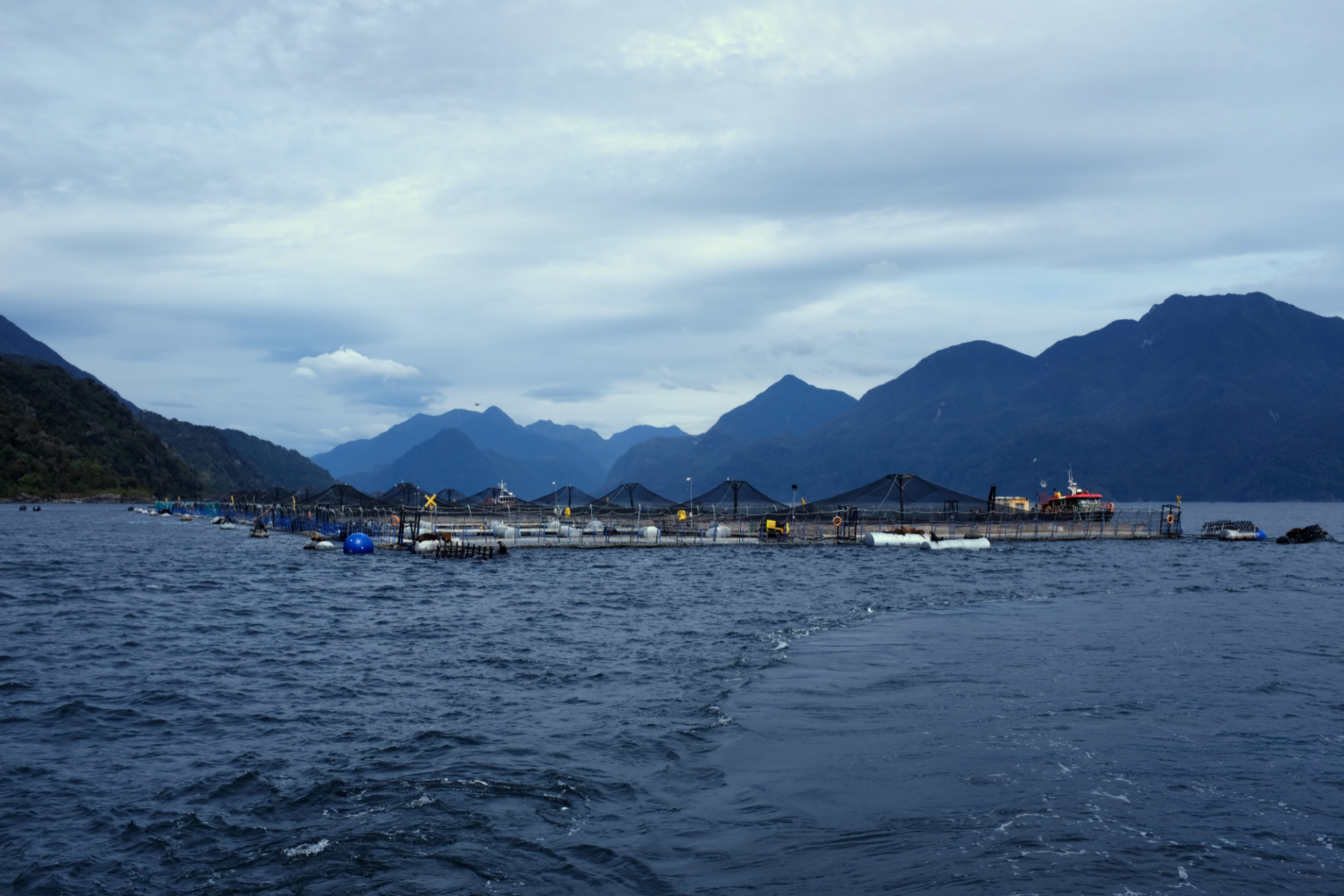
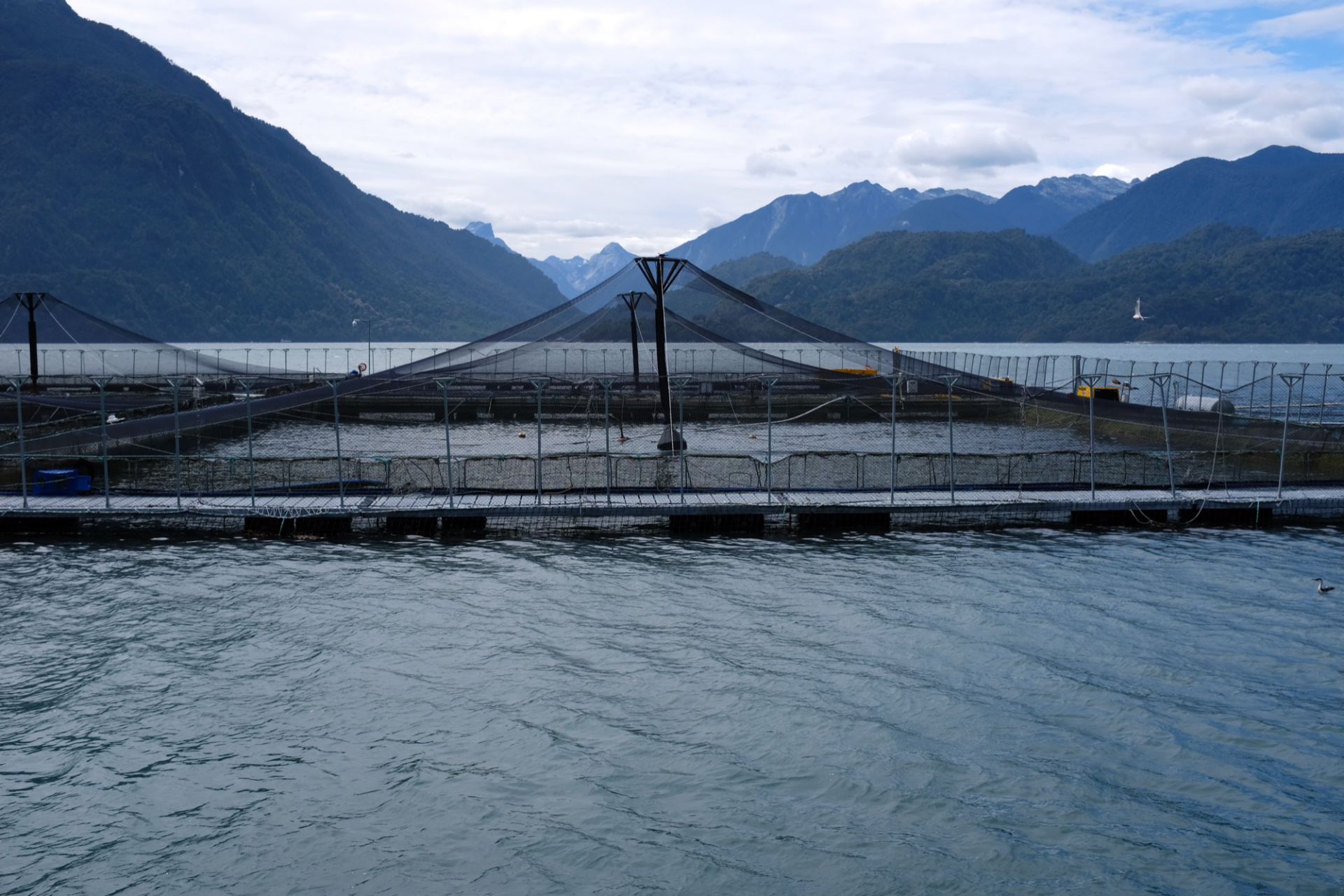
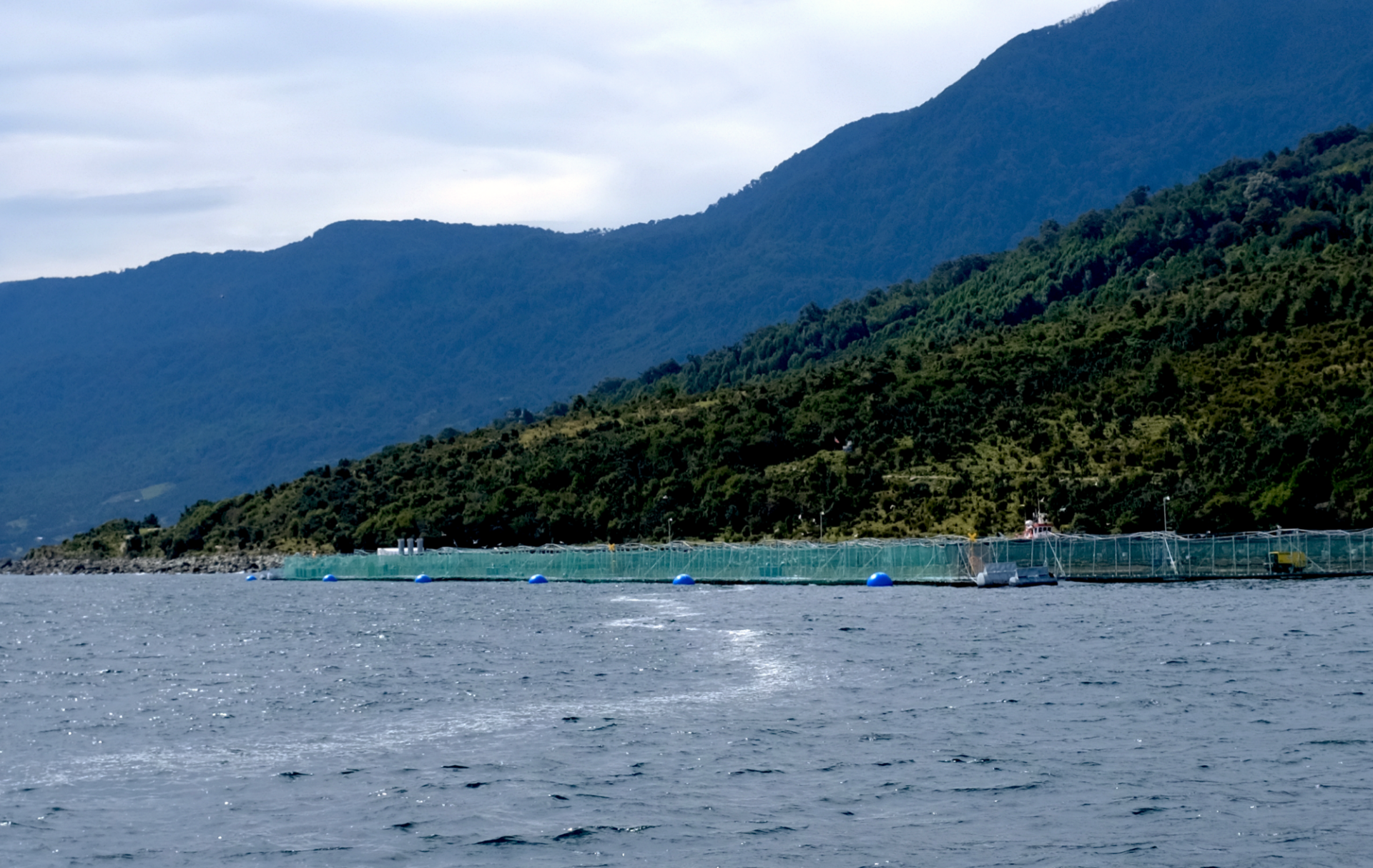
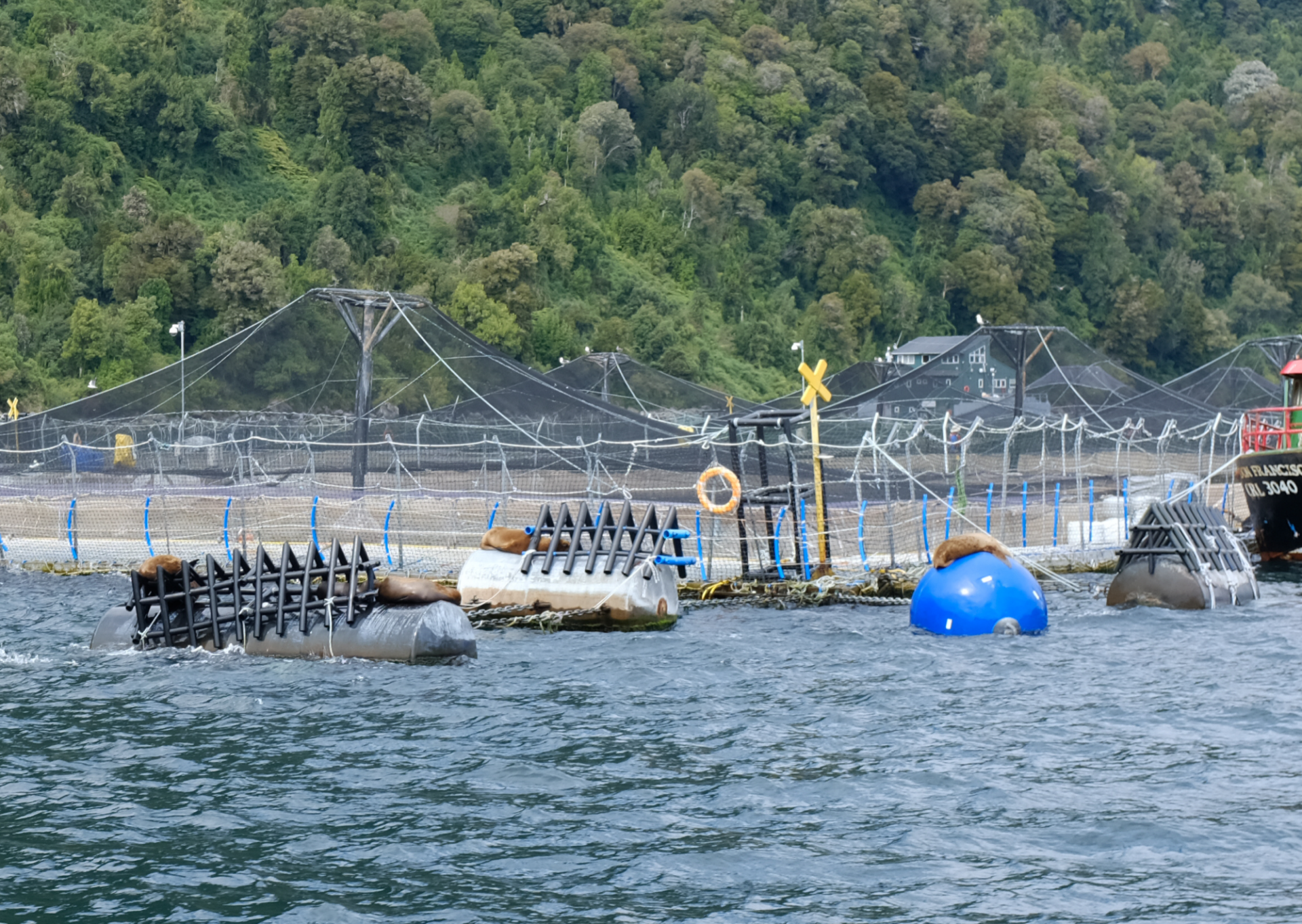
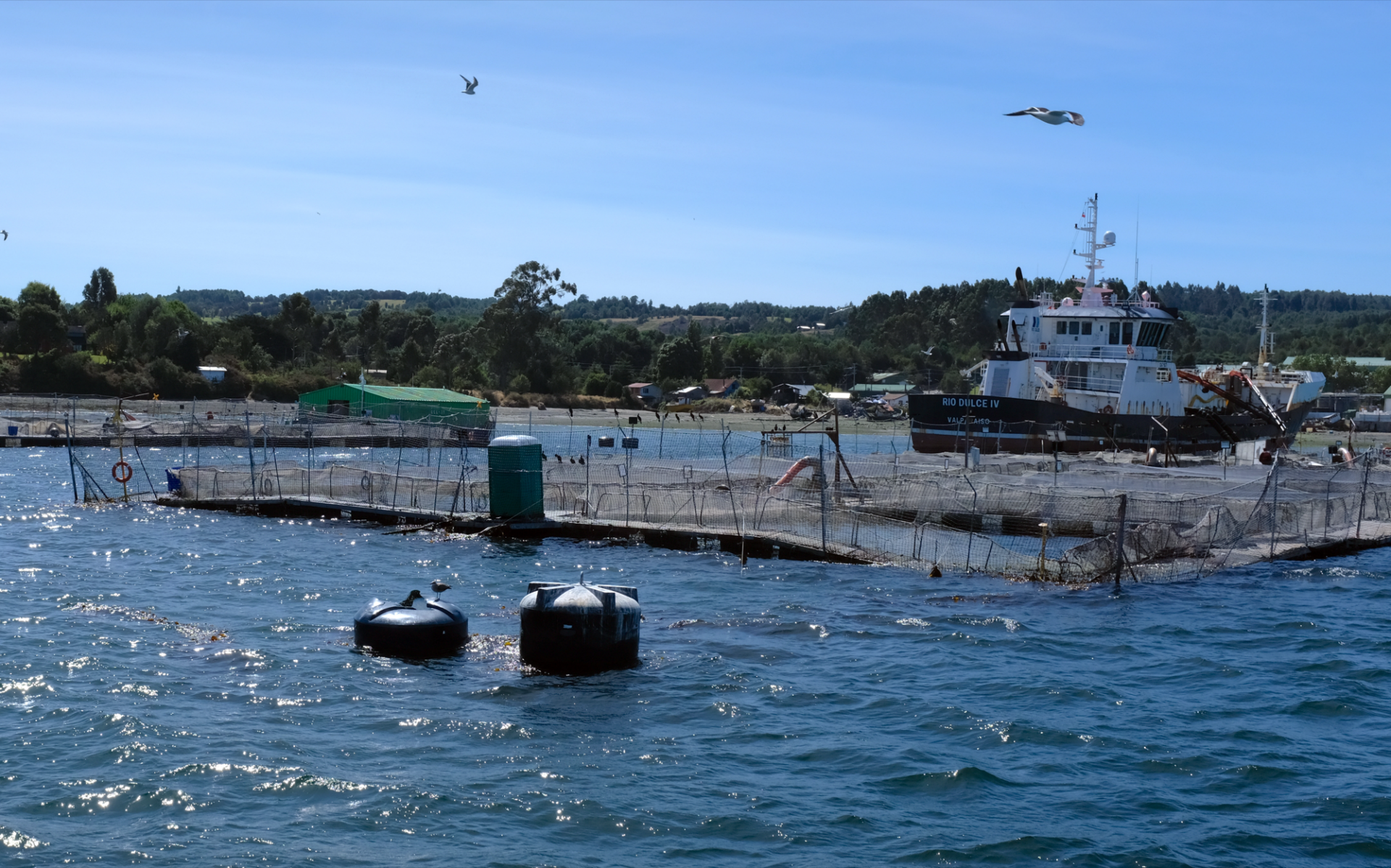
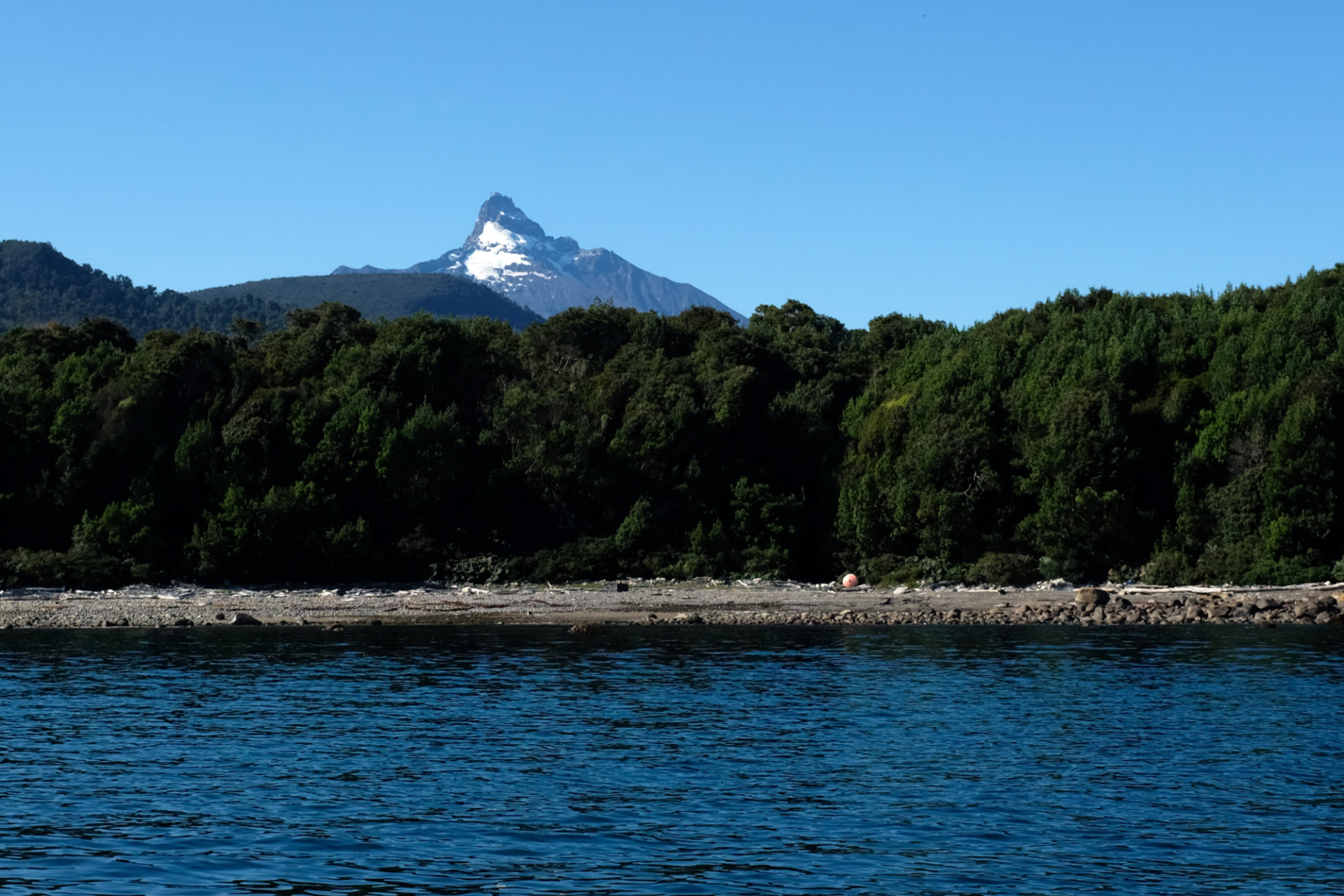
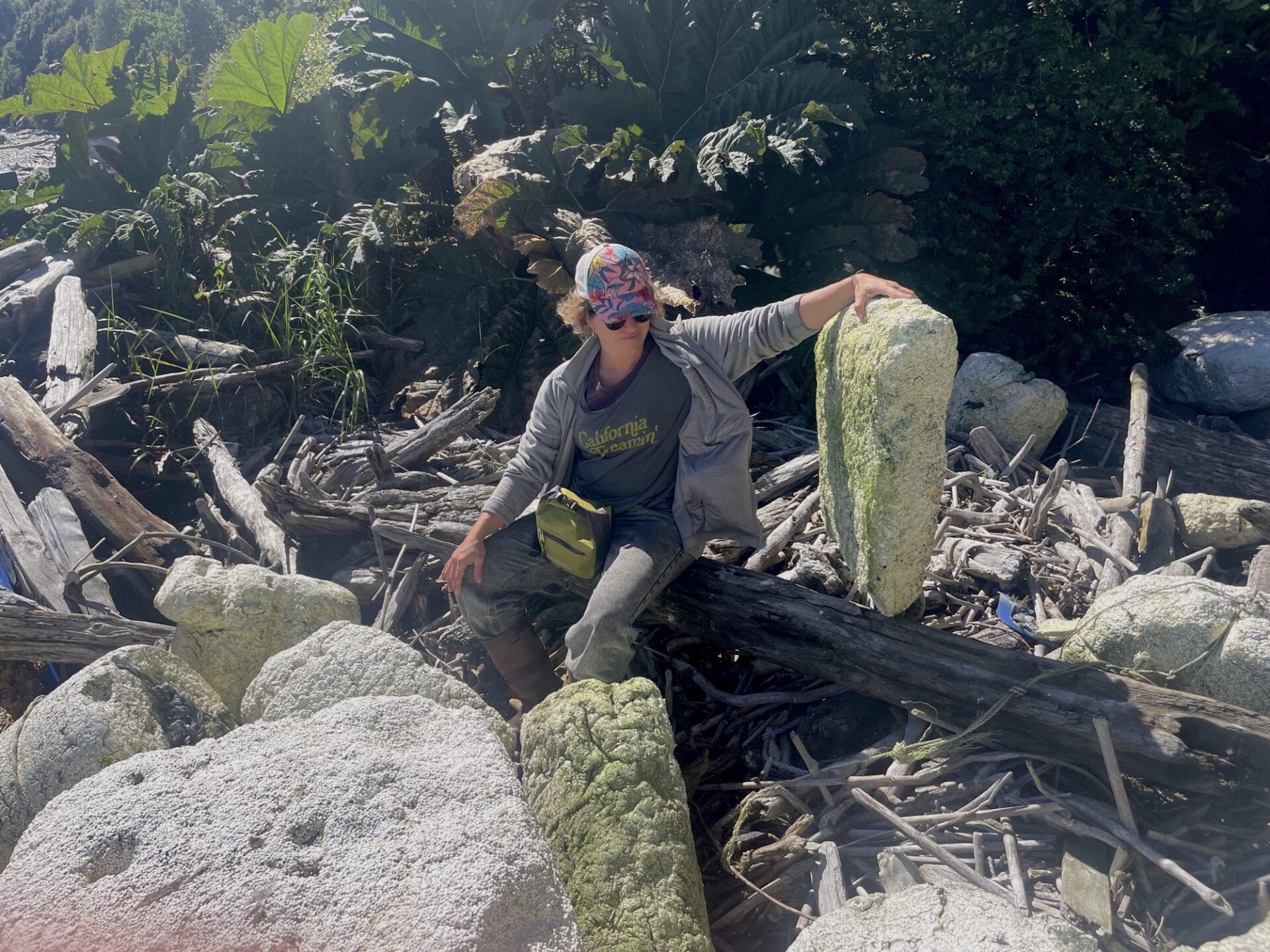
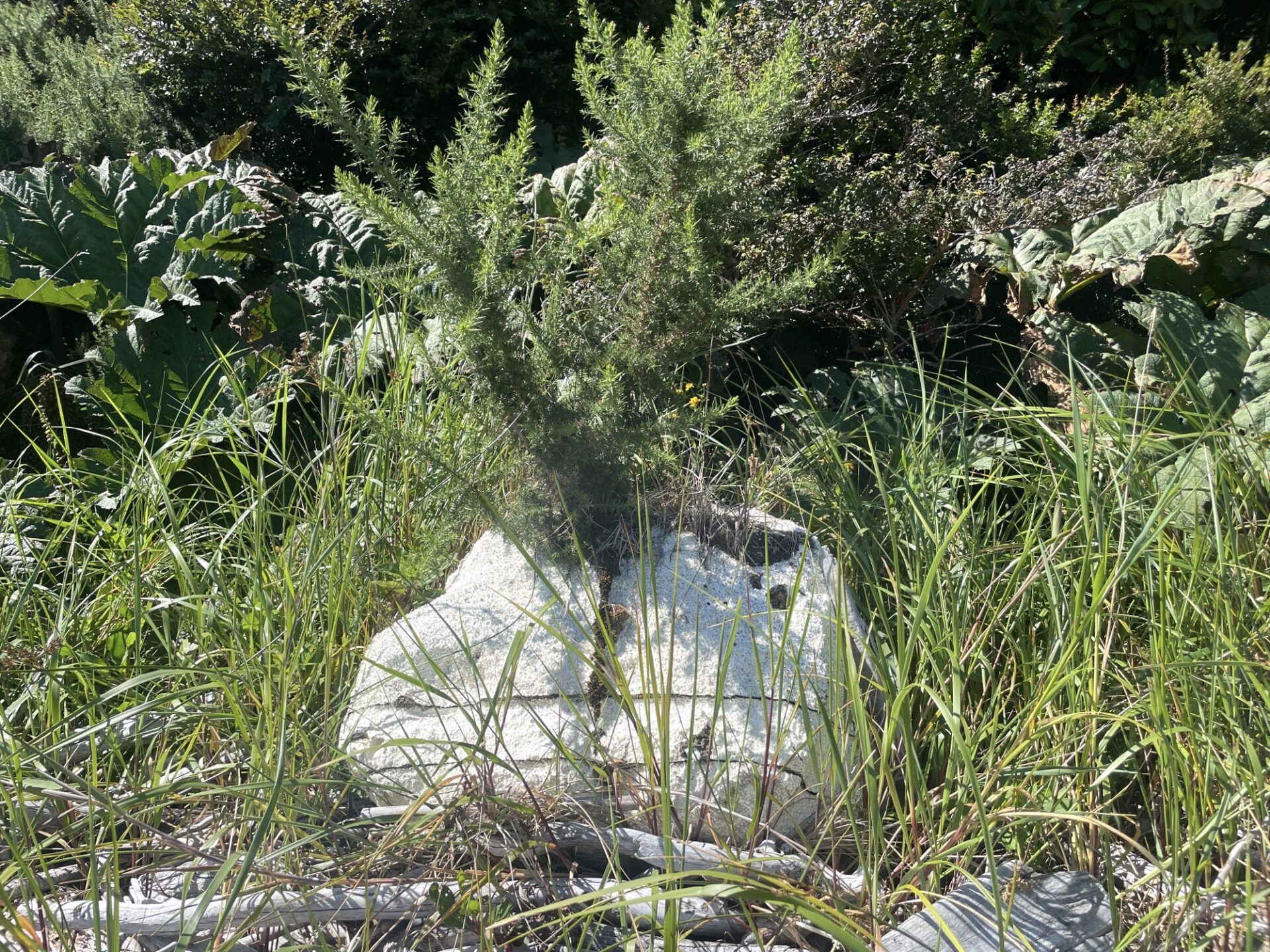
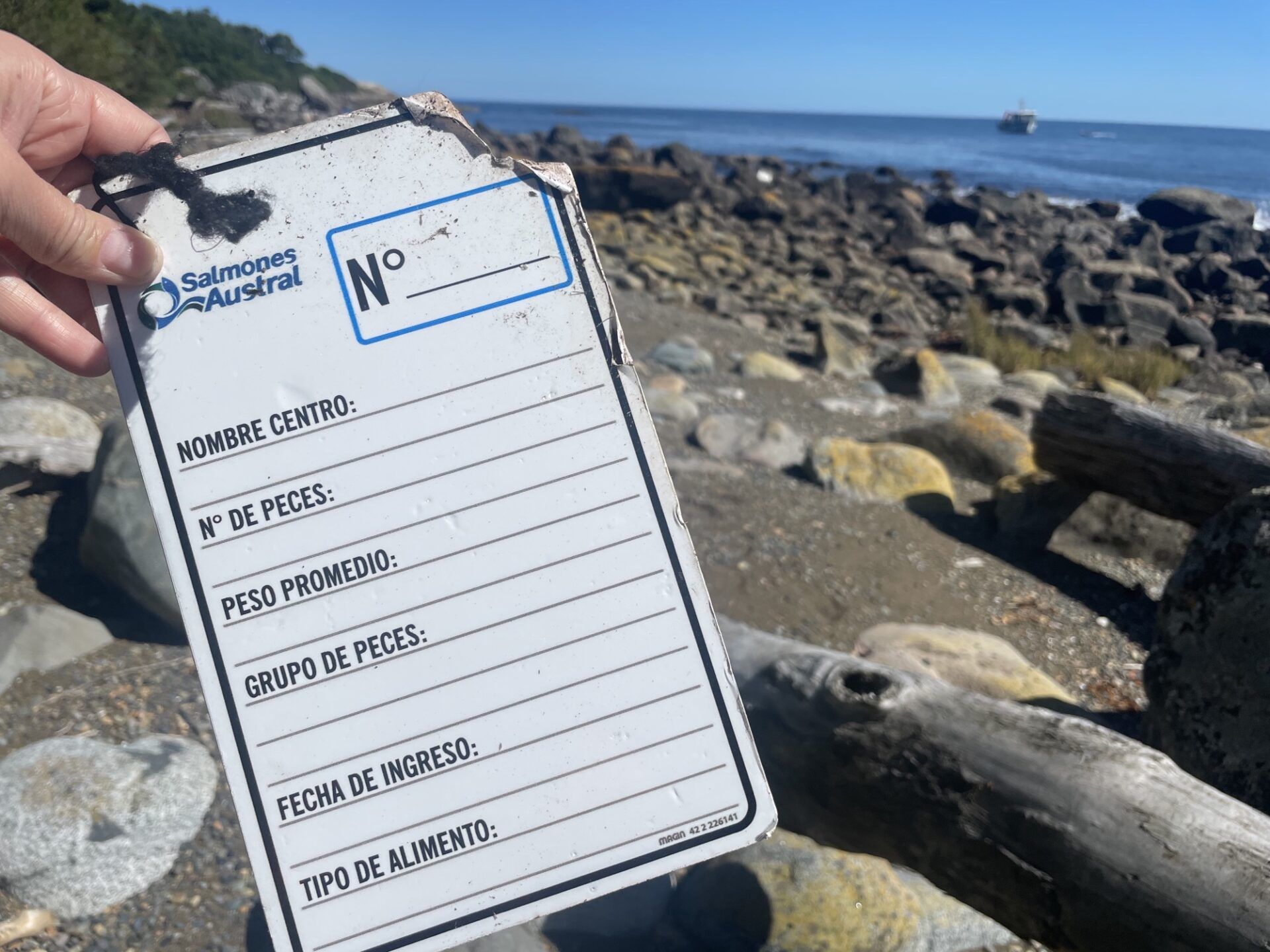
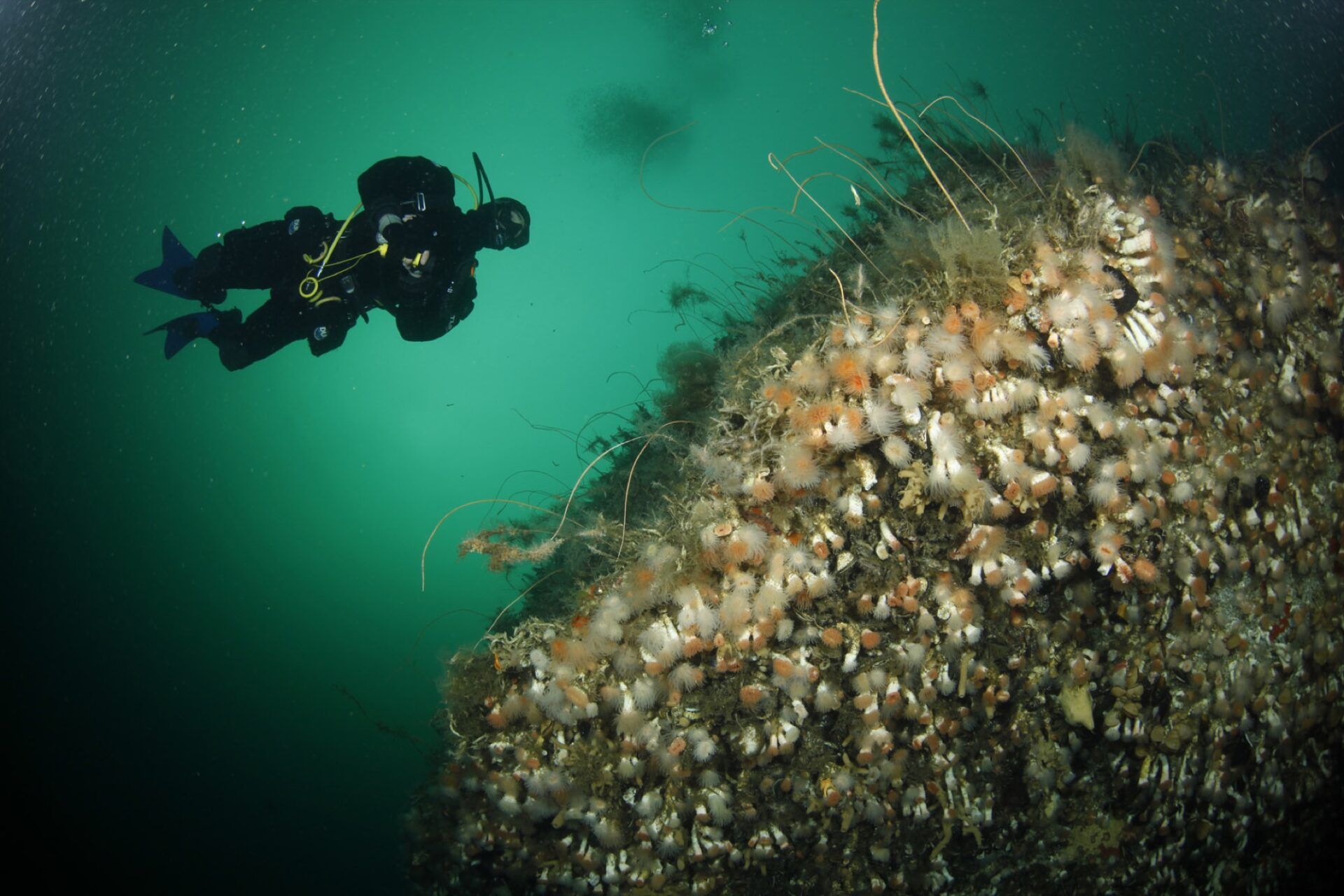
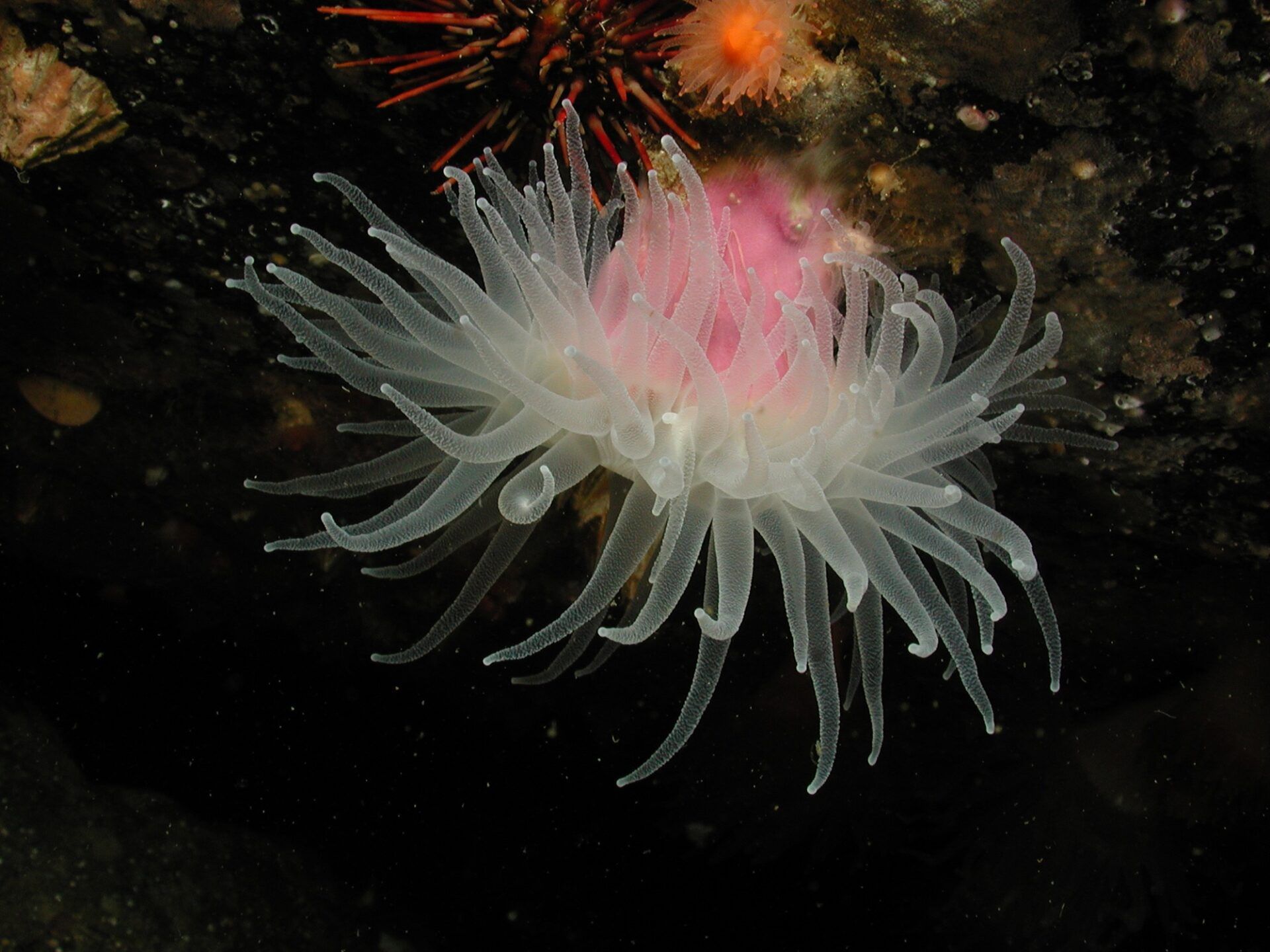
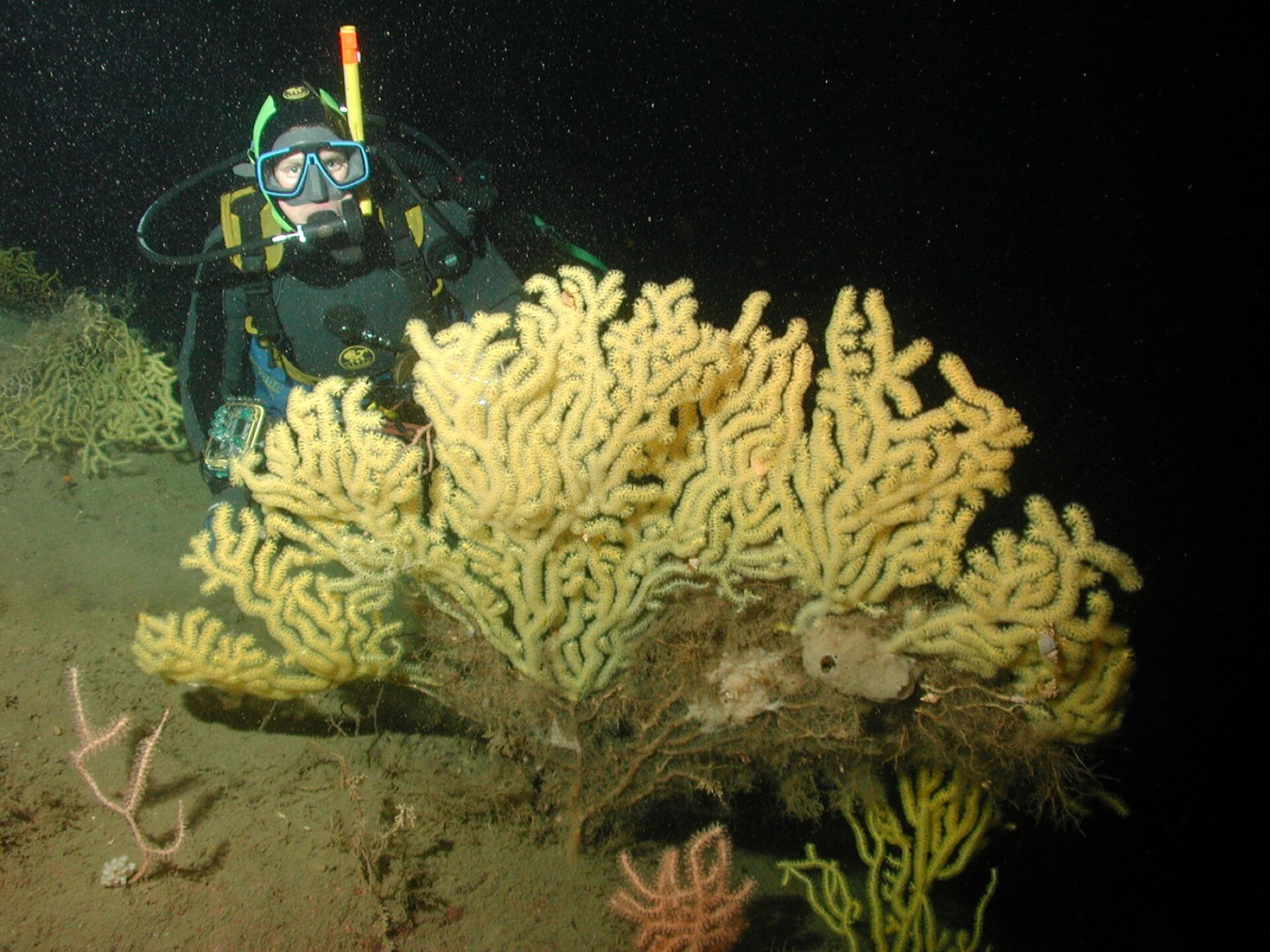
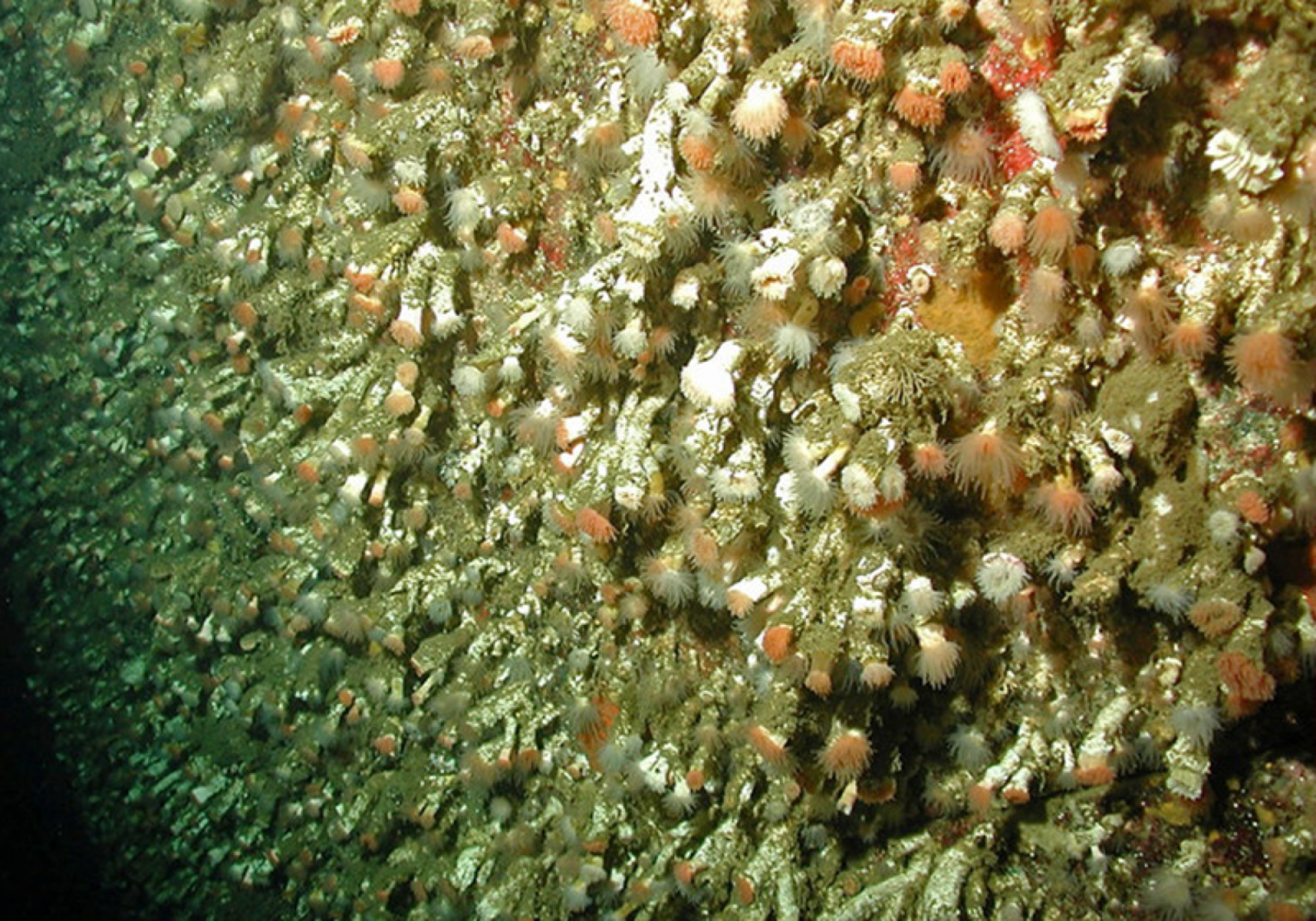
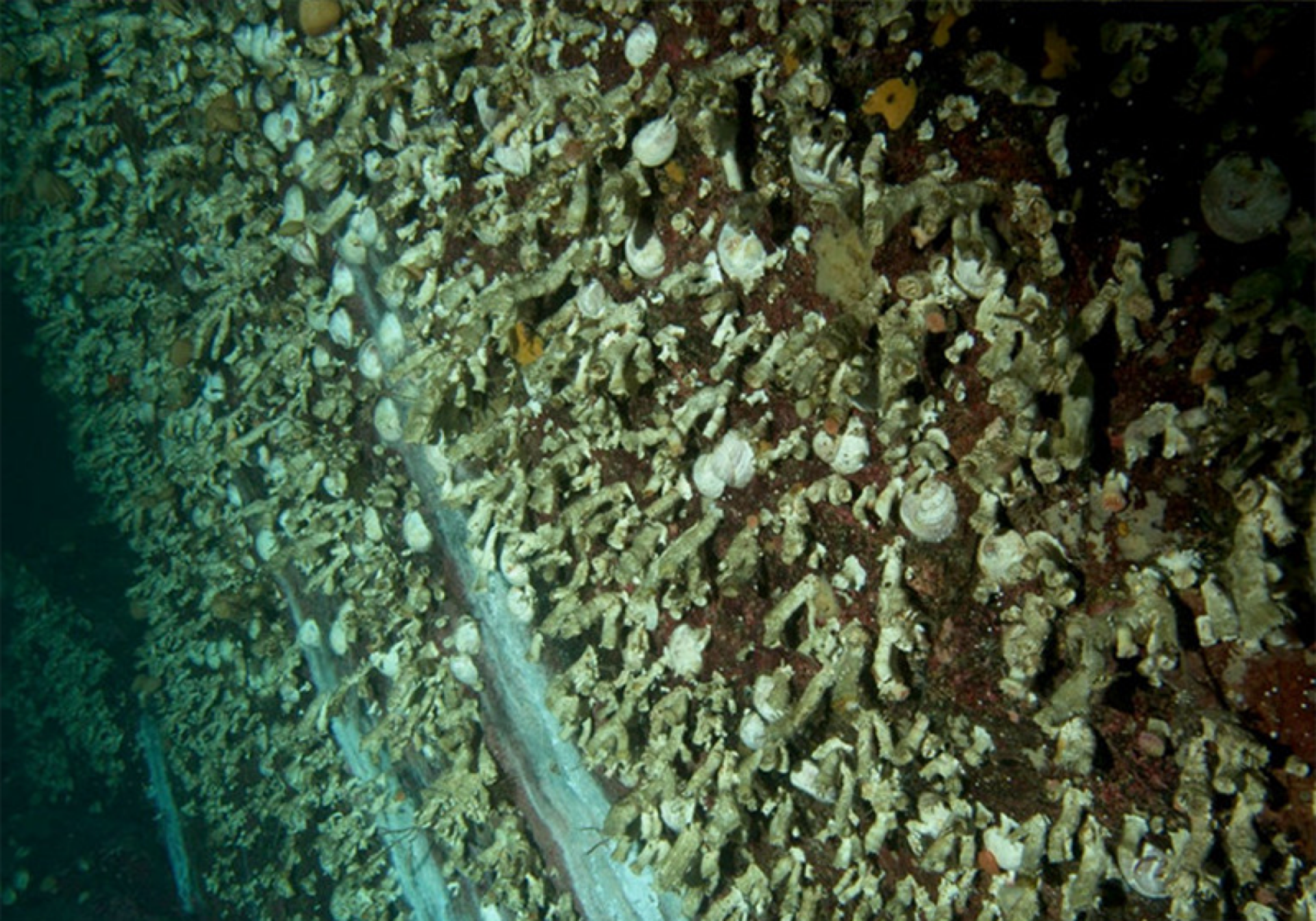
#FrankenFish; Not worth the price on any level.
#ecocide
Please examine the impacts of use of Antarctic krill as feedstock for salmon farms including Those in Norway. See https://amp.theguardian.com/environment/2008/mar/23/fishing.food